Are We Doing ‘Systems’ Research? An Assessment of Methods for Climate Change Adaptation to Hydrohazards in a Complex World
Abstract
1. Climate Change and Sustainability in the Anthropocene
1.1. Needs for Future Research in Complex Human–Nature Systems
1.2. What Now?
2. Materials and Methods
2.1. Collect the Literature: Initial Search and Exclusion Strategy
- Theoretical principles or conceptual discussions, without the accompanied use, comparison, or recommendation of specific methods (though theoretical discussions were arguably useful to the field, their exclusion ensured the review’s practical focus);
- Non-hydrohazards, without some consideration of associated hydrohazards (e.g., forest fire threats, without explicit consideration of droughts);
- The causes of climate change (e.g., socioeconomic trends) without linking to consequent hazards or impacts;
- Summaries of conference proceedings or journal issues;
- Ancient historical climate trends, sometimes in relation to the eradication of a specific civilisation (as these were not generalisable to the practical study of modern adaptation).
2.2. Broad Check for Complexity Concepts
- a horizontal bar chart portraying each variable with their respective overall, nonmutually exclusive, occurrence;
- a vertical bar chart portraying the number of papers allotted to mutually exclusive ‘bins’, with each bin representing a distinct combination of variables, signified by applicable variable intersections indicated by dots and lines.
2.3. Characterise the Typical Research Context
- Drought hazard type;
- Focus on quantification of a hazard; and
- Focus on quantification of an impact.
2.4. In-Depth Assessment
2.4.1. Frequency and Co-Occurrence of Variables
- Physical measurement or lab experiment method (under the umbrella of classic quantitative methods);
- Statistical analysis method (under the umbrella of classic quantitative methods);
- the cellular spatial scale;
- the short-term time scale (hours to days to weeks);
- the medium-term (months to years) time scale;
- the agricultural human–nature dimension; and
- the ecological human–nature dimension.
2.4.2. Associations between Variables
3. Results
3.1. Broad Check for Complexity Concepts
3.1.1. Are the Complexity Concepts Acknowledged?
- 41% (305) papers covered only one concept;
- 34% (254) papers covered two concepts;
- 17% (122) papers covered three concepts;
- 6% (42) papers covered four concepts;
- 2% (13) papers covered five concepts;
- 0% or none of the papers covered all 6 concepts.
3.2. Description of the Research Context
3.3. In-Depth Assessment: Frequency and Co-Occurrence of Variables
3.3.1. How Well Are We Accounting for Future Uncertainties?
3.3.2. How Well Are Different Spatial and Temporal Scales Covered?
- 36% (265) covered just one spatial scale;
- 34% (252) covered two spatial scales;
- 14% (103) covered three spatial scales;
- 10% (79) covered four spatial scales;
- 4% (28) covered five spatial scales;
- 1% (9) covered six spatial scales;
- 0.1% (1) covered seven spatial scales;
- 0% or none of the papers covered all eight or all nine spatial scales.
- 40% (295) covered one time scale;
- 43% (319) covered two time scales;
- 17% (123) covered all three time scales.
- Short-term + medium-term + cellular + individual + household + community + town or city ward + city + regional (0.1% or 1 paper) short-term + medium-term + long-term + individual + household + community + town or city ward + city + regional (0.1% or 1 paper);
- Short-term + medium-term + long-term + individual + community + town or city ward + city + regional + national (0.1% or 1 paper);
- Short-term + medium-term + long-term + individual + town or city ward + city + regional + national + global (0.1% or 1 paper).
3.3.3. How Well Are Human–Nature Dimensions Actually Covered?
- 14% (102) did not address any human–nature dimensions;
- 30% (223) referenced just one dimension;
- 21% (158) referenced two dimensions;
- 16% (119) referenced three dimensions;
- 7% (52) referenced four dimensions;
- 5% (40) referenced five dimensions;
- 3% (21) referenced six dimensions;
- 2% (16) referenced seven dimensions;
- 0.7% (5) referenced eight dimensions;
- 0.1% (1) referenced nine dimensions;
- 0% or none referenced all ten dimensions.
- Agricultural + behavioural + ecological + economic + infrastructure (general) + infrastructure (pre-hazard) + infrastructure (post-hazard) + social (1 or 0.1% of papers);
- Agricultural + behavioural + community + ecological + economic + infrastructure (pre-hazard) + institutional + social (1 or 0.1% of papers);
- Agricultural + behavioural + ecological + economic + infrastructure (general) + infrastructure (pre-hazard) + institutional + social (1 or 0.1% of papers);
- Behavioural + community + economic + infrastructure (general) + infrastructure (pre-hazard) + infrastructure (post-hazard) + institutional + social (2 or 0.3% of papers).
3.3.4. How Are Methods Applied to Climate Change Adaptation for Hydrohazards?
- 16% (120) covered one method type;
- 32% (238) covered two method types;
- 23% (166) covered three method types;
- 14% (102) covered four method types;
- 10% (73) covered five method types;
- 3% (22) covered six method types;
- 2% (15) covered seven method types;
- 0 or none covered eight method types;
- 0.1% (1) covered nine method types.
3.4. In-Depth Assessment: Associations between Variables
3.4.1. Are There Statistically Significant Patterns in How Complexity Concepts Are Studied?
4. Discussion
5. Conclusions
Author Contributions
Funding
Conflicts of Interest
Appendix A
| Year | Addressed 5+ Complexity Concepts in Broad Check | Addressed 8+ Spatiotemporal Scales | Addressed 7+ Human–Nature Dimensions | Spanned across 7+ Method Types |
|---|---|---|---|---|
| 2018 | Liu, et al., 2018†,Ψ [26] | Aslam, et al., 2018 [27] | Shah, et al., 2018 [28] | |
| Cabal & Erlich, 2018 † [29] | ||||
| Ling & Chiang, 2018 Ψ [30] | ||||
| Jayanimita, et al., 2018 [31] | ||||
| 2017 | Honti, et al., 2017 Ψ [32] Stigter, et al., 2017 †,Ψ [33] | Toimil, et al., 2017† [34] Gahi, et al., 2017 † [35] | Toimil, et al, 2017† [34] | Espada, et al., 2017 [40] |
| Kumasi, et al., 2017 [36] | ||||
| Parry, et al., 2017 [37] | ||||
| Rizzi, et al., 2017 † [38] | ||||
| Kaspersen & Halsnaes, 2017 † [39] | ||||
| 2016 | Schaphoff, et al., 2016 Ψ [41] | Sample, et al., 2016 [42] | Kingsborough, et al., 2016 Ψ [47] van Ruiten, et al., 2016 † [48] Weis, et al., 2016 [49] | |
| Herslund, et al., 2016 † [43] | ||||
| Bailey & Buck, 2016 [44] | ||||
| Hasse & Weingaertner, 2016 [45] | ||||
| Kim, et al., 2016 Ψ [46] | ||||
| 2015 | Dunford, et al., 2015†,Ψ [50] | Van der Knaap, et al., 2015†,Ψ [54] Gombault, et al., 2015 † [55] | Antwi, et al., 2015 [56] Lee, et al., 2015 Ψ [57] Spyridi, et al., 2015 [58] | Kane, et al., 2015 [59] Lee, et al., 2015 Ψ [57] |
| Espada, et al., 2015 Ψ [51] | ||||
| Syed, et al., 2015 Ψ [52] | ||||
| Yazdanfar & Sharma, 2015 [53] | ||||
| 2014 | Pulido-Velazquez, et al., 2014†,Ψ [60] Ulrich & Rauch, 2014 †,Ψ [61] | Ronchail, et al., 2014 [62] | Krellenberg, et al., 2014 [66] Haasnoot, et al., 2014 Ψ [67] | Krellenberg, et al., 2014 [66] Ronco, et al., 2014 [63] Giupponi, 2014 Ψ [64] |
| Ronco, et al., 2014 [63] | ||||
| Giupponi, 2014Ψ [64] | ||||
| Van Bodegom, et al., 2014 Ψ [65] | ||||
| 2013 | Zischg, et al., 2013 [68] | |||
| Lung, et al., 2013 [69] | ||||
| Parker & Wilby, 2013 [70] | ||||
| Liu, et al., 2013 [71] | ||||
| 2012 | Chang, et al., 2012 Ψ [72] Georgakakos, et al., 2012 [73] | Verburg, et al., 2012 † [74] | Malik, et al., 2012 [75] Chaliha, et al., 2012 [76] | Rijcken, et al., 2012†,Ψ [77] |
| 2011 | Haasnoot, et al., 2011†,Ψ [78] | Ceccato, et al., 2011 Ψ [79] | ||
| Verma & Negandhi, 2011 [80] | ||||
| Sokolewicz, et al., 2011 † [81] | ||||
| 2010 | Williams, et al., 2010 [82] | Stakhiva & Stewart, 2010 Ψ [83] | Lempert & Groves, 2010 † [84] | |
| 2009 | Angus, et al., 2009†,Ψ [85] | Angus, et al., 2009†,Ψ [85] | ||
| 2008 | Dewals, et al., 2008Ψ [86] Kazama, et al., 2008 [87] | Dewals, et al., 2008Ψ [86] | ||
| 2004 | Hooijer, et al., 2004 † [88] |
References
- Griggs, G.B.; Paris, L. Flood control failure: San Lorenzo River, California. Environ. Manag. 1982, 6, 407–419. [Google Scholar] [CrossRef]
- BBC. Thirty-Year Flooding Saga in Dumfries Flows Onwards. Available online: https://www.bbc.co.uk/news/uk-scotland-south-scotland-40431565 (accessed on 25 May 2018).
- Collet, L.; Harrigan, S.; Prudhomme, C.; Formetta, G.; Beevers, L. Future hot-spots for hydro-hazards in Great Britain: A probabilistic assessment. Hydrol. Earth Syst. Sci. 2018, 22, 5387–5401. [Google Scholar] [CrossRef]
- BBC. Flooding Boss Urges Debate on Abandoning at-Risk Homes. Available online: http://www.bbc.co.uk/news/uk-politics-43476335 (accessed on 25 May 2018).
- Righi, A.W.; Saurin, T.A.; Wachs, P. A systematic literature review of resilience engineering: Research areas and a research agenda proposal. Reliab. Eng. Syst. Saf. 2015, 141, 142–152. [Google Scholar] [CrossRef]
- Cutter, S.L. Compound, Cascading, or Complex Disasters: What’s in a Name? Environ. Sci. Policy Sustain. Dev. 2018, 60, 16–25. [Google Scholar] [CrossRef]
- Palsson, G.; Szerszynski, B.; Sorlin, S.; Marks, J.; Avril, B.; Crumley, C.; Hackmann, H.; Holm, P.; Ingram, J.; Kirman, A.; et al. Reconceptualizing the ‘Anthropos’ in the Anthropocene: Integrating the social sciences and humanities in global environmental change research. Environ. Sci. Policy 2013, 28, 3–13. [Google Scholar] [CrossRef]
- Liu, J.; Dietz, T.; Carpenter, S.R.; Alberti, M.; Folke, C.; Moran, E.; Pell, A.N.; Deadman, P.; Kratz, T.; Lubchenco, J.; et al. Complexity of Coupled Human and Natural Systems. Science 2007, 317, 1513–1516. [Google Scholar] [CrossRef] [PubMed]
- Brondizio, E.S.; O’Brien, K.; Bai, X.; Biermann, F.; Steffen, W.; Berkhout, F.; Cudennec, C.; Lemos, M.C.; Wolfe, A.; Palma-Oliveira, J.; et al. Re-conceptualizing the Anthropocene: A call for collaboration. Glob. Environ. Chang. 2016, 39, 318–327. [Google Scholar] [CrossRef]
- Bai, X.; van der Leeuw, S.; O’Brien, K.; Berkhout, F.; Biermann, F.; Brondzio, E.S.; Cudennec, C.; Dearing, J.; Duraiappah, A.; Glaser, M.; et al. Plausible and desirable futures in the Anthropocene: A new research agenda. Glob. Environ. Chang. 2016, 39, 351–362. [Google Scholar] [CrossRef]
- Verburg, P.H.; Dearing, J.A.; Dyke, J.G.; van der Leeuw, S.; Seitzinger, S.; Steffen, W.; Syvitski, J. Methods and approaches to modelling the Anthropocene. Glob. Environ. Chang. 2016, 39, 328–340. [Google Scholar] [CrossRef]
- Kotzee, I.; Reyers, B. Piloting a social-ecological index for measuring flood resilience: A composite index approach. Ecol. Indic. 2016, 60, 45–53. [Google Scholar] [CrossRef]
- Qasim, S.; Qasim, M.; Shrestha, R.P.; Khan, A.N.; Tun, K.; Ashraf, M. Community resilience to flood hazards in the Khyber Pukthunkhwa province of Pakistan. Int. J. Disaster Risk Reduct. 2016, 18, 100–106. [Google Scholar] [CrossRef]
- Singh-Peterson, L.; Salmon, P.; Goode, N.; Gallina, J. Translation and evaluation of the Baseline Resilience Indicators for Communities on the Sunshine Coast, Queensland Australia. Int. J. Disaster Risk Reduct. 2014, 10, 116–126. [Google Scholar] [CrossRef]
- Cutter, S.; Burton, C.; Emrich, C. Disaster resilience indicators for benchmarking baseline conditions. J. Homel. Secur. Emerg. Manag. 2010, 60, 16–25. [Google Scholar] [CrossRef]
- R Core Team. R: A Language and Environment for Statistical Computing; R Foundation for Statistical Computing: Vienna, Austria, 2018. [Google Scholar]
- Lex, A.; Gehlenborg, N.; Strobelt, H.; Vuillemot, R.; Pfister, H. UpSet: Visualization of Intersecting Sets. IEEE Trans. Vis. Comput. Gr. 2014, 20, 1983–1992. [Google Scholar] [CrossRef] [PubMed]
- Koziol, N.; Bilder, C. MRCV: A package for analysing categorical variables with multiple response options. R J. 2014, 6, 144–150. [Google Scholar] [CrossRef]
- Cramer, H. Chapter 21: The two-dimensional case. In Mathematical Methods of Statistics; Princeton University Press: Princeton, NJ, USA, 1946. [Google Scholar]
- Escarameia, M. Improving Urban Resilience to Flooding: A Vital Role for Civil Engineers. Proc. Inst. Civ. Eng. Civ. Eng. 2016, 169, 101. [Google Scholar] [CrossRef]
- Morrison, A.; Westbrook, C.J.; Nob, C.F. A review of the flood risk management governance and resilience literature. J. Flood Risk Manag. 2017, 11, 291–304. [Google Scholar] [CrossRef]
- McClymont, K.; Morrison, D.; Beevers, L.; Carmen, E. Flood Resilience: A systematic review. J. Environ. Plan. Manag. 2019. in review. [Google Scholar]
- Burt, T.P.; Howden, N.J.K.; Worral, F. The changing water cycle: Hydroclimatic extremes in the British Isles. Wires Water 2016, 3, 854–870. [Google Scholar] [CrossRef]
- Quesada-Montano, B.; Baldassarre, G.D.; Rangecroft, S.; Van Loon, A.F. Hydrological change: Towards consistent approach to assess changes on both floods and droughts. Adv. Water Resour. 2018, 111, 31–35. [Google Scholar] [CrossRef]
- Visser, A.; Beevers, L.; Collet, L.; Formetta, G.; Smith, K.; Wanders, N.; Thober, S.; Pan, M.; Kumar, R. Spatio-temporal analysis of compound hydro-hazard extremes across the UK. Adv. Water Resour. in review.
- Liu, D.; Guo, S.; Shao, Q.; Liu, P.; Xiong, L.; Wang, L.; Hong, X.; Xu, Y.; Wang, Z. Assessing the effects of adaptation measures on optimal water resources allocation under varied water availability conditions. J. Hydrol. 2018, 556, 759–774. [Google Scholar] [CrossRef]
- Aslam, R.A.; Shrestha, S.; Pandey, V.P. Groundwater vulnerability to climate change: A review of the assessment methodology. Sci. Total Environ. 2018, 612, 853–875. [Google Scholar] [CrossRef] [PubMed]
- Shah, A.A.; Ye, J.; Abid, M.; Khan, J.; Amir, S.M. Flood hazards—Household vulnerability and resilience in disaster-prone districts of Khyber Pakhtunkhwa province, Pakistan. Nat. Hazards 2018, 93, 147–165. [Google Scholar] [CrossRef]
- Cabal, A.; Erlich, M. Flood risk management approaches and tools for mitigation strategies of coastal submersions and preparedness of crisis management in France. Int. J. River Basin Manag. 2018, 16, 353–369. [Google Scholar] [CrossRef]
- Ling, T.Y.; Chiang, Y.C. Strengthening the resilience of urban retailers towards flood risks—A case study in the riverbank region of Kaohsiung City. Int. J. Disaster Risk Reduct. 2018, 27, 541–555. [Google Scholar] [CrossRef]
- Jayanimita, M.E.; Puspasari, D.A.; Widyahantari, R.; Kristina, D.; Ratnaningtyas, T.; Setionurjaya, A.; Anindita, Y.A. Beyond vulnerability assessment: Impacts of developments toward local adaptive capacity in the Kemijen City Village, Semarang City. IOP Conf. Ser. Earth Environ. Sci. 2018, 123, 1–13. [Google Scholar] [CrossRef]
- Honti, M.; Schuwirth, N.; Rieckermann, J.; Stamm, C. Can integrative catchment management mitigate future water quality issues caused by climate change and socio-economic development? Hydrol. Earth Syst. Sci. 2017, 21, 1593–1609. [Google Scholar] [CrossRef]
- Stigter, T.Y.; Varanda, M.; Bento, S.; Nunes, J.P.; Hugman, R. Combined assessment of climate change and socio-economic development as drivers of freshwater availability in the south of Portugal. Water Resour. Manag. 2017, 31, 609–628. [Google Scholar] [CrossRef]
- Toimil, A.; Losada, I.J.; Diaz-Simal, P.; Izaguirre, C.; Camus, P. Multi-sectoral, high-resolution assessment of climate change consequences of coastal flooding. Clim. Chang. 2017, 145, 431–444. [Google Scholar] [CrossRef]
- Gahi, N.Z.; Dongo, K.; Koudou, A.; Badolo, M. Innovative approach to build a “no regret” framework for reinforcing agricultural water resilience under climate risks and change in Burkina Faso. Int. J. Clim. Chang. Strateg. Manag. 2017, 9, 68–86. [Google Scholar] [CrossRef]
- Kumasi, T.C.; Antwi-Agyei, P.; Obiri-Danso, K. Small-holder farmers’ climate change adaptation practices in the Upper East Region of Ghana. Environ. Dev. Sustain. 2017, 1–18. [Google Scholar] [CrossRef]
- Parry, L.; Davies, G.; Almeida, O.; Frausin, G.; de Moraes, A.; Rivero, S.; Filizola, N.; Torres, P. Social vulnerability to climatic shocks is shaped by urban accessibility. Ann. Am. Assoc. Geogr. 2017, 108, 125–143. [Google Scholar] [CrossRef]
- Rizzi, J.; Torresan, S.; Zabeo, A.; Critto, A.; Tosono, A.; Tomasin, A.; Marcomini, A. Assessing storm surge risk under future sea-level rise scenarios: A case study in the North Adriatic coast. J. Coast. Conserv. 2017, 21, 453–471. [Google Scholar] [CrossRef]
- Kaspersen, P.S.; Halsnaes, K. Integrated climate change risk assessment: A practical application for urban flooding during extreme precipitation. Clim. Serv. 2017, 6, 55–64. [Google Scholar] [CrossRef]
- Espada, R.J.; Apan, A.; McDougall, K. Vulnerability assessment of urban community and critical infrastructures for integrated flood risk management and climate adaptation strategies. Int. J. Disaster Resil. Built Environ. 2017, 8, 375–411. [Google Scholar] [CrossRef]
- Schaphoff, S.; Reyer, C.P.O.; Schepaschenko, D.; Gerten, D.; Shvidenko, A. Tamm Review: Observed and projected climate change impacts on Russia’s forests and its carbon balance. For. Ecol. Manag. 2016, 361, 432–444. [Google Scholar] [CrossRef]
- Sample, J.E.; Baber, I.; Badger, R. A spatially distributed risk screening tool to assess climate and land use change impacts on water-related ecosystem services. Environ. Model. Softw. 2016, 83, 12–26. [Google Scholar] [CrossRef]
- Herslund, L.B.; Jalayer, F.; Jean-Baptiste, N.; Jorgensen, G.; Kabisch, S.; Kombe, W.; Lindley, S.; Nyed, P.K.; Pauleit, S.; Printz, A.; et al. A multi-dimensional assessment of urban vulnerability to climate change in Sub-Saharan Africa. Nat. Hazards 2016, 82, 149–172. [Google Scholar] [CrossRef]
- Bailey, I.; Buck, L.E. Managing for resilience: A landscape framework for food and livelihood security and ecosystem services. Food Secur. 2016, 8, 477–490. [Google Scholar] [CrossRef]
- Hasse, J.U.; Weingaertner, D.E. From vision to action: Roadmapping as a strategic method and tool to implement climate change adaptation—The example of the roadmap ‘water sensitive urban design 2020’. Water Sci. Technol. 2016, 73, 2251–2259. [Google Scholar] [CrossRef] [PubMed]
- Kim, H.G.; Lee, D.K.; Jung, H.; Kil, S.H.; Park, J.H.; Park, C.; Tanaka, R.; Seo, C.; Kim, H.; Kong, W.; et al. Finding key vulnerable areas by a climate change vulnerability assessment. Nat. Hazards 2016, 81, 1683–1732. [Google Scholar] [CrossRef]
- Kingsborough, A.; Borgomeo, E.; Hall, J.W. Adaptation pathways in practice: Mapping options and trade-offs for London’s water resources. Sustain. Cities Soc. 2016, 27, 386–397. [Google Scholar] [CrossRef]
- van Ruiten, K.; Bles, T.; Kiel, J. EU-INTACT case studies: Impact of extreme weather on critical infrastructure. In Proceedings of the FLOODrisk 2016—3rd European Conference on Flood Risk Management, Lyon, France, 17–21 October 2016. [Google Scholar]
- Weis, S.W.M.; Agostini, V.N.; Roth, L.M.; Schill, S.R.; Knowles, J.E.; Blyther, R. Assessing vulnerability: An integrated approach for mapping adaptive capacity, sensitivity, and exposure. Clim. Chang. 2016, 136, 615–629. [Google Scholar] [CrossRef]
- Dunford, R.; Harrison, P.A.; Rounsevell, M.D.A. Exploring scenario and model uncertainty ni cross-sectoral integrated assessment approaches to climate change impacts. Clim. Chang. 2015, 132, 417–432. [Google Scholar] [CrossRef]
- Espada, R.J.; Apan, A.; McDougall, K. Vulnerability assessment and interdependency analysis of critical infrastructures for climate adaptation and flood mitigation. Int. J. Disaster Resil. Built Environ. 2015, 6, 313–346. [Google Scholar] [CrossRef]
- Syed, M.A.; Al Amin, M.; Rahman, A.; Mallick, D. Synergies of remote sensing with social science tools for participatory management of natural resources. In Proceedings of the Imaging and Geospatial Technology Forum, IGTF 2015—ASPRS Annual Conference and co-located JACIE Workshop, Tampa, FL, USA, 4–8 May 2015. [Google Scholar]
- Yazdanfar, Z.; Sharma, A. Urban drainage system planning and design—Challenges with climate change and urbanization: A review. Water Sci. Technol. 2015, 72, 165–179. [Google Scholar] [CrossRef]
- van der Knaap, Y.A.M.; de Graaf, M.; van Ek, R.; Witte, J.-P.M.; Aerts, R.; Bierkens, M.F.P.; van Bodegom, P.M. Potential impacts of groundwater conservation measures on catchment-wide vegetation patterns in a future climate. Landsc. Ecol. 2015, 30, 855–869. [Google Scholar] [CrossRef]
- Gombault, C.; Sottile, M.-F.; Ngwa, F.F.; Madramootoo, C.A.; Michaud, A.R.; Beaudin, I.; Chikhaoui, M. Modelling climate change impacts on the hydrology of an agricultural watershed in southern Québec. Can. Water Resour. J. 2015, 40, 71–86. [Google Scholar] [CrossRef]
- Antwi, E.K.; Boakye-Danquah, J.; Owusu, A.B.; Loh, S.K.; Mensah, R.; Boafo, Y.A.; Apronti, P.T. Community vulnerability assessment index for flood prone savannah agro-ecological zone: A case study of Wa West District, Ghana. Weather Clim. Extrem. 2015, 10, 56–69. [Google Scholar] [CrossRef]
- Lee, C.C.; Tung, C.P.; Liu, T.M.; Tsao, J.H.; Liu, G.R.; Chiang, Y.C.; Huang, K.C. Toward an innovative interdisciplinary method for vulnerability assessments: The case of Taiwan. J. Water Clim. Chang. 2015, 6, 501–517. [Google Scholar] [CrossRef]
- Spyridi, D.; Vlachokostas, C.; Michailidou, A.V.; Sioutas, C.; Moussiopoulous, N. Strategic planning for climate change mitigation and adaptation: The case of Greece. Int. J. Clim. Chang. Strateg. Manag. 2015, 7, 272–289. [Google Scholar] [CrossRef]
- Kane, H.H.; Fletcher, C.H.; Frazer, N.; Anderson, T.R.; Barbee, M.M. Modeling sea-level rise vulnerability of coastal environments using ranked management concerns. Clim. Chang. 2015, 131, 349–361. [Google Scholar] [CrossRef]
- Pulido-Velazquez, M.; Pena-Haro, S.; Garcia-Prats, A.; Mocholi-Almudever, A.F.; Henriquez-Dole, L.; Macian-Sorribes, H.; Lopez-Nicholas, A. Integrated assessment of the impact of climate and land use changes on groundwater quantity and quality in the Mancha Oriental system (Spain). Hydrol. Earth Syst. Sci. 2014, 19, 1677–1693. [Google Scholar] [CrossRef]
- Ulrich, C.; Rauch, W. Exploring critical pathways for urban water management to identify robust strategies under deep uncertainties. Water Res. 2014, 145, 431–444. [Google Scholar]
- Ronchail, J.; Cohen, M.; Alonso-Roldán, M.; Garcin, H.; Sultan, B.; Angles, S. Adaptability of mediterranean agricultural systems to climate change: The example of the Sierra Mágina olive-growing region (Andalusia, Spain). Weather. Soc. 2014, 6, 451–467. [Google Scholar] [CrossRef]
- Ronco, P.; Gallina, V.; Torresan, S.; Zabeo, A.; Semenzin, E.; Critto, A.; Marcomini, A. The KULTURisk Regional Risk Assessment methodology for water-related natural hazards—Part 1: Physical-environmental assessment. Hydrol. Earth Syst. Sci. 2014, 18, 5399–5414. [Google Scholar] [CrossRef]
- Giuopponi, C. Decision support for mainstreaming climate change adaptation in water resources management. Water Resour. Manag. 2014, 28, 4795–4808. [Google Scholar] [CrossRef]
- van Bodegom, P.M.; Verboom, J.; Witte, J.P.M.; Vos, C.C.; Bartholomeus, R.P.; Geertsema, W.; Cormont, A.; van der Veen, M.; Aerts, R. Synthesis of ecosystem vulnerability to climate change in the Netherlands shows the need to consider environmental fluctuations in adaptation measures. Reg. Environ. Chang. 2014, 14, 933–942. [Google Scholar] [CrossRef]
- Krellenberg, K.; Link, F.; Welz, J.; Harris, J.; Barth, K.; Irarrazaval, F. Supporting local adaptation: The contribution of socio-environmental fragmentation to urban vulnerability. Supporting local adaptation: The contribution of socio-environmental fragmentation to urban vulnerability. Appl. Geogr. 2014, 55, 61–70. [Google Scholar] [CrossRef]
- Haasnoot, M.; van Deursen, W.P.A.; Guillaume, J.H.A.; Kwakkel, J.H.; van Beek, E.; Middelkoop, H. Fit for purpose? Building and evaluating a fast, integrated model for exploring water policy pathways. Environ. Model. Softw. 2014, 60, 99–120. [Google Scholar] [CrossRef]
- Zischg, A.; Schober, S.; Sereinig, N.; Rauter, M.; Seymann, C.; Goldschmidt, F.; Bäk, R.; Schleicher, E. Monitoring the temporal development of natural hazard risks as a basis indicator for climate change adaptation. Nat. Hazards 2013, 67, 1045–1058. [Google Scholar] [CrossRef]
- Lung, T.; Lavalle, C.; Hiederer, R.; Dosio, A.; Bouwer, L.M. A multi-hazard regional level impact assessment for Europe combining indicators of climatic and non-climatic change. Glob. Environ. Chang. 2013, 23, 522–536. [Google Scholar] [CrossRef]
- Parker, J.M.; Wilby, R.L. Quantifying Household Water Demand: A Review of Theory and Practice in the UK. Water Resour. Manag. 2013, 27, 981–1011. [Google Scholar] [CrossRef]
- Liu, G.; Liu, H.; Yin, Y. Global patterns of NDVI-indicated vegetation extremes and their sensitivity to climate extremes. Environ. Res. Lett. 2013, 8, 025009. [Google Scholar] [CrossRef]
- Chang, N.B.; Qi, C.; Yang, Y.J. Optimal expansion of a drinking water infrastructure system with respect to carbon footprint, cost-effectiveness and water demand. J. Environ. Manag. 2012, 110, 194–206. [Google Scholar] [CrossRef]
- Georgakakos, K.P.; Graham, N.E.; Cheng, F.Y.; Spencer, C.; Shamir, E.; Georgakakos, A.P.; Yao, H.; Kistenmacher, M. Value of adaptive water resources management in northern California under climatic variability and change: Dynamic hydroclimatology. J. Hydrol. 2012, 412, 47–65. [Google Scholar] [CrossRef]
- Verburg, P.H.; Koomen, E.; Hilferink, M.; Pérez-Soba, M.; Lesschen, J.P. An assessment of the impact of climate adaptation measures to reduce flood risk on ecosystem services. Landsc. Ecol. 2012, 27, 473–486. [Google Scholar] [CrossRef]
- Malik, S.M.; Awan, H.; Khan, N. Mapping vulnerability to climate change and its repercussions on human health in Pakistan. Glob. Health 2012, 8, 1–10. [Google Scholar] [CrossRef]
- Chaliha, S.; Sengupta, A.; Sharma, N.; Ravindranath, N.H. Climate variability and farmer’s vulnerability in a flood-prone district of Assam. Int. J. Clim. Chang. Strateg. Manag. 2012, 4, 179–200. [Google Scholar] [CrossRef]
- Rijcken, T.; Stijnen, J.; Slootjes, N. “SimDelta”—Inquiry into an internet-based interactive model for water infrastructure development in the Netherlands. Water 2012, 4, 295–320. [Google Scholar] [CrossRef]
- Haasnoot, M.; Middelkoop, H.; Van Beek, E.; Van Deursen, W.P.A. A method to develop sustainable water management strategies for an uncertain future. Sustain. Dev. 2011, 19, 369–381. [Google Scholar] [CrossRef]
- Ceccato, L.; Giannini, V.; Giuopponi, C. Participatory assessment of adaptation strategies to flood risk in the Upper Brahmaputra and Danube river basins. Environ. Sci. Policy 2011, 14, 1163–1174. [Google Scholar] [CrossRef]
- Verma, M.; Negandhi, D. Valuing ecosystem services of wetlands—A tool for effective policy formulation and poverty alleviation. Hydrol. Sci. J. 2011, 56, 1622–1639. [Google Scholar] [CrossRef]
- Sokolewicz, M.; Louters, T.; Otten, A. Modern integrated river flood management for climate change in the Netherlands: The Ijssel Delta project. Int. J. River Basin Manag. 2011, 9, 141–149. [Google Scholar] [CrossRef]
- Williams, C.J.R.; Kniveton, D.R.; Layberry, R. Assessment of a climate model to reproduce rainfall variability and extremes over Southern Africa. Theor. Appl. Climatol. 2010, 99, 9–27. [Google Scholar] [CrossRef]
- Stakhiv, E.; Stewart, B. Needs for climate information in support of decision-making in the water sector. Procedia Environ. Sci. 2010, 1, 102–119. [Google Scholar]
- Lempert, R.J.; Groves, D.G. Identifying and evaluating robust adaptive policy responses to climate change for water management agencies in the American west. Technol. Forecast. Soc. Chang. 2010, 77, 960–974. [Google Scholar] [CrossRef]
- Angus, S.D.; Parris, B.; Hassani, M.B. Climate change impacts and adaptation in Bangladesh: An agent-based approach. In Proceedings of the 18th World IMACS/MODSIM Congress, Cairns, Australia, 13–17 July 2009. [Google Scholar]
- Dewals, B.J.; Giron, E.; Ernst, J.; Hecq, W.; Pirotton, M. Integrated assessment of flood protection measures in the context of climate change: Hydraulic modelling and economic approach. Wit Trans. Ecol. Environ. 2008, 108, 149–159. [Google Scholar]
- Kazama, S.; Izumi, H.; Sarukkalige, P.R.; Nasu, T.; Sawamoto, M. Estimating snow distribution over a large area and its application for water resources. Hydrol. Process 2008, 22, 2315–2324. [Google Scholar] [CrossRef]
- Hooijer, A.; Klijn, F.; Pedroli, G.B.M.; Van Os, A.G. Towards sustainable flood risk management in the Rhine and Meuse river basins: Synopsis of the findings of IRMA-SPONGE. River Res. Appl. 2004, 20, 343–357. [Google Scholar] [CrossRef]
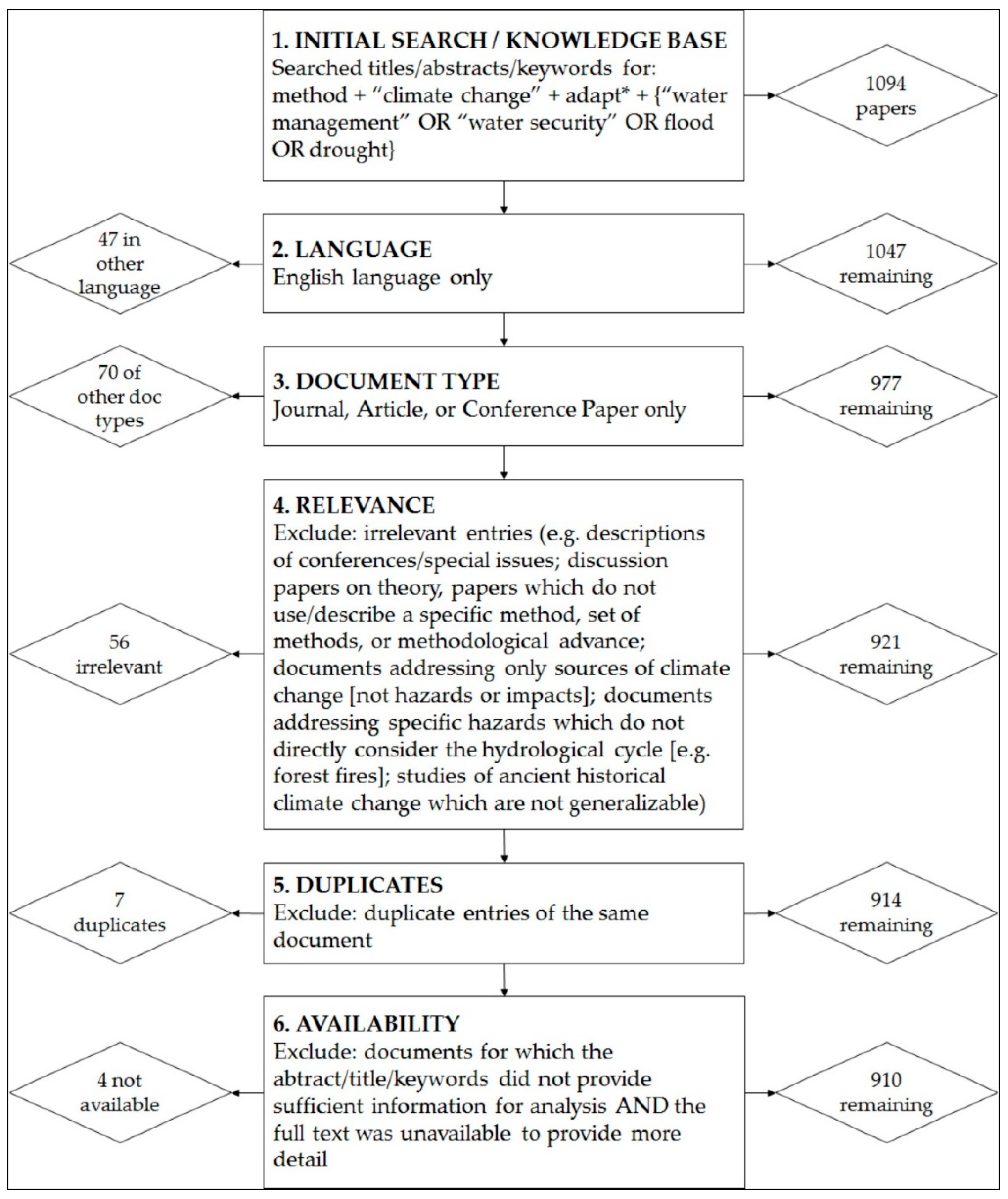
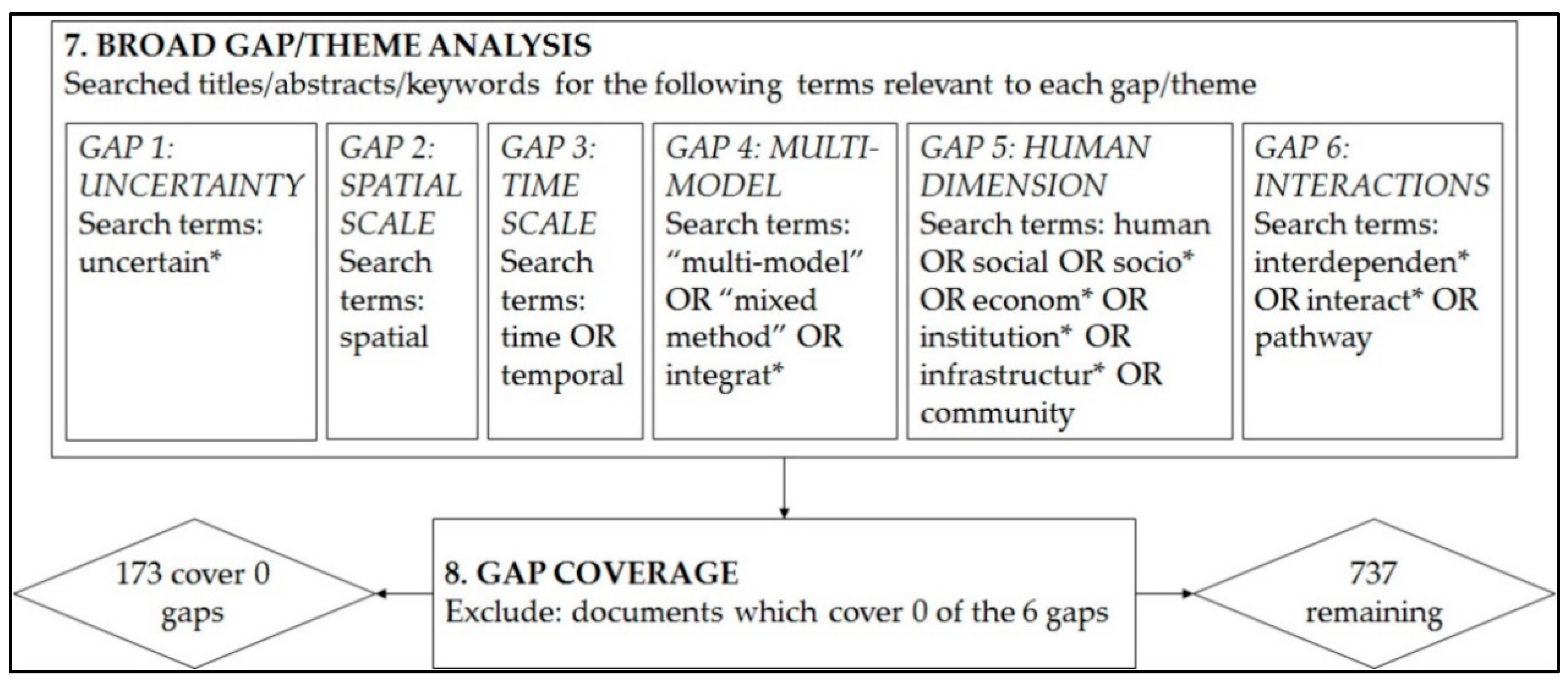
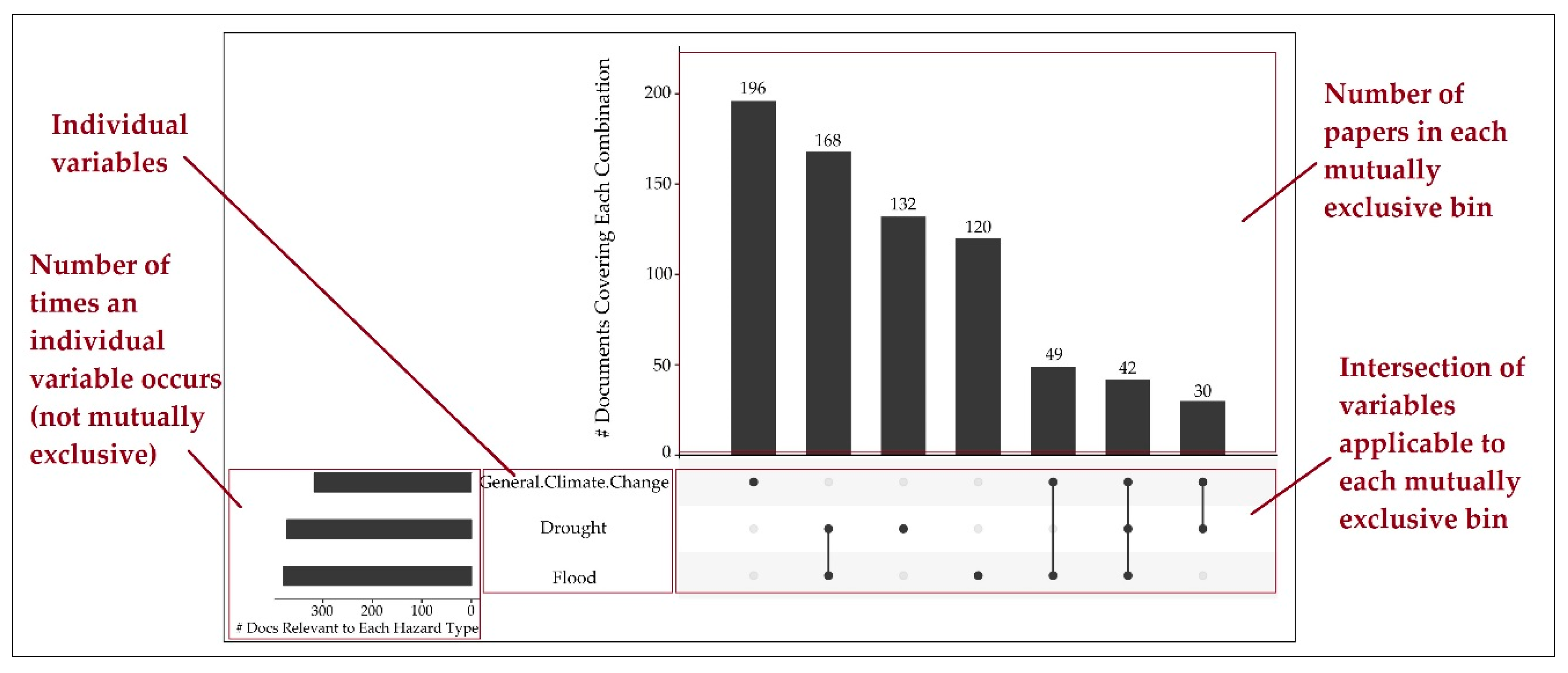
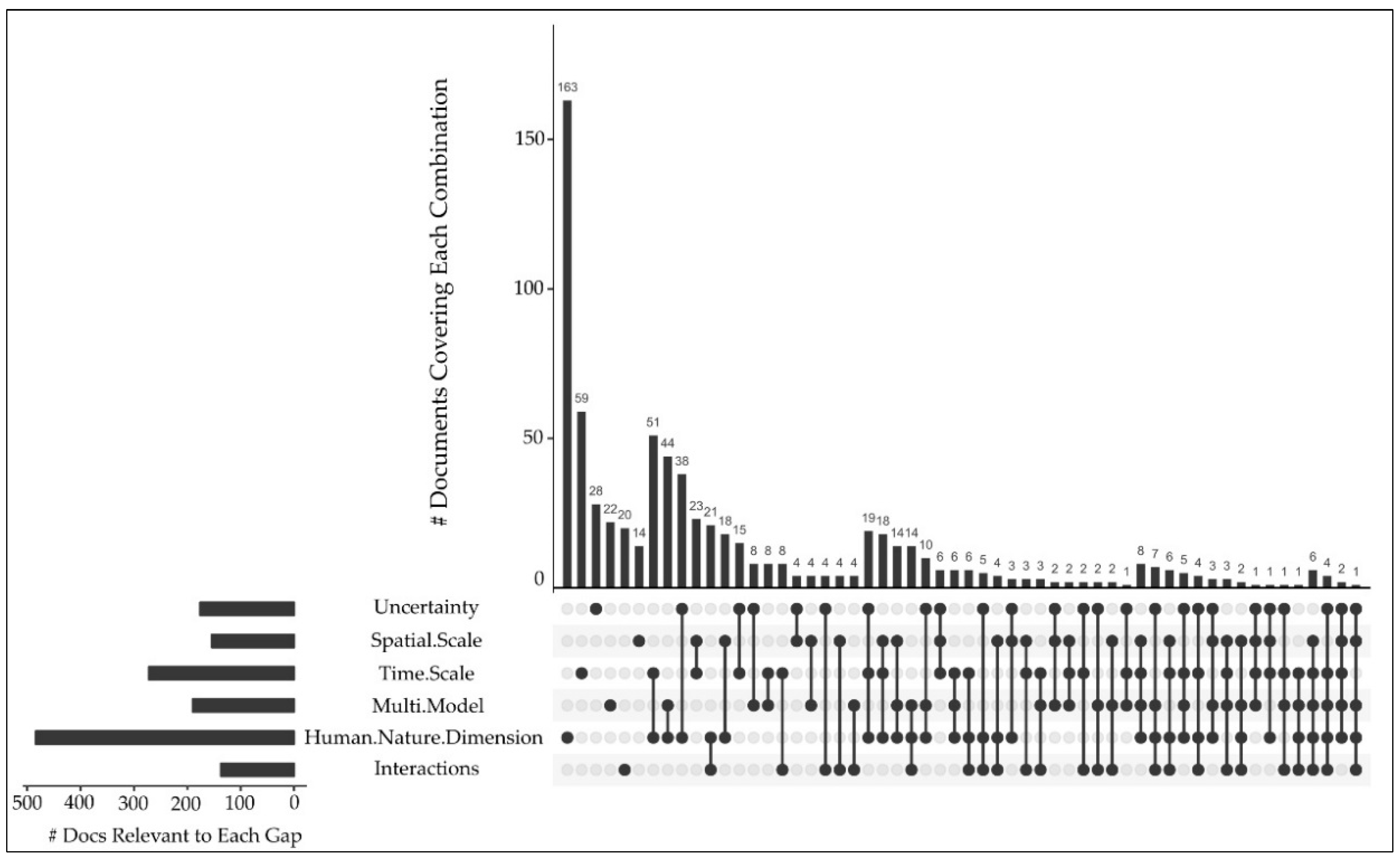

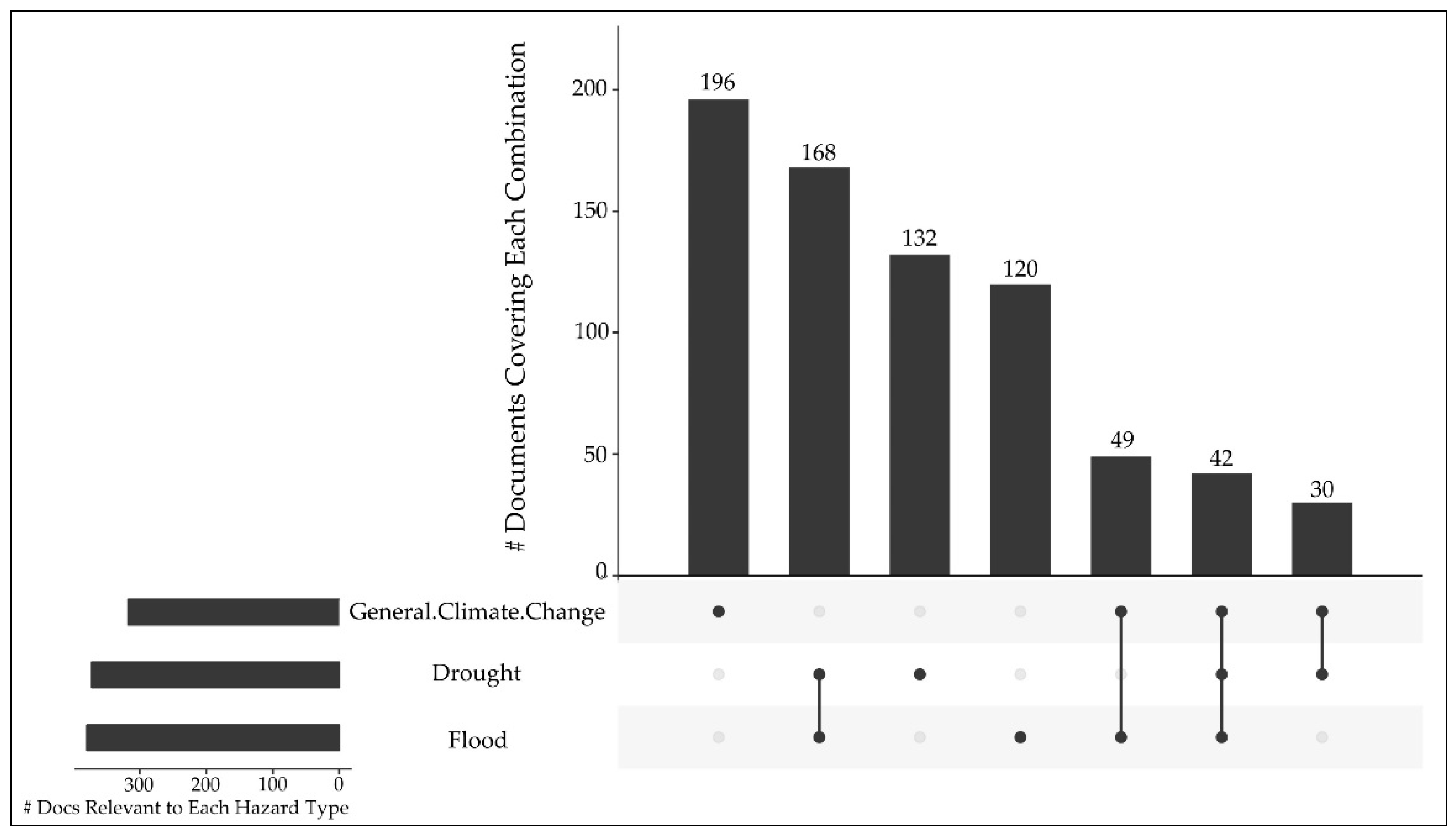
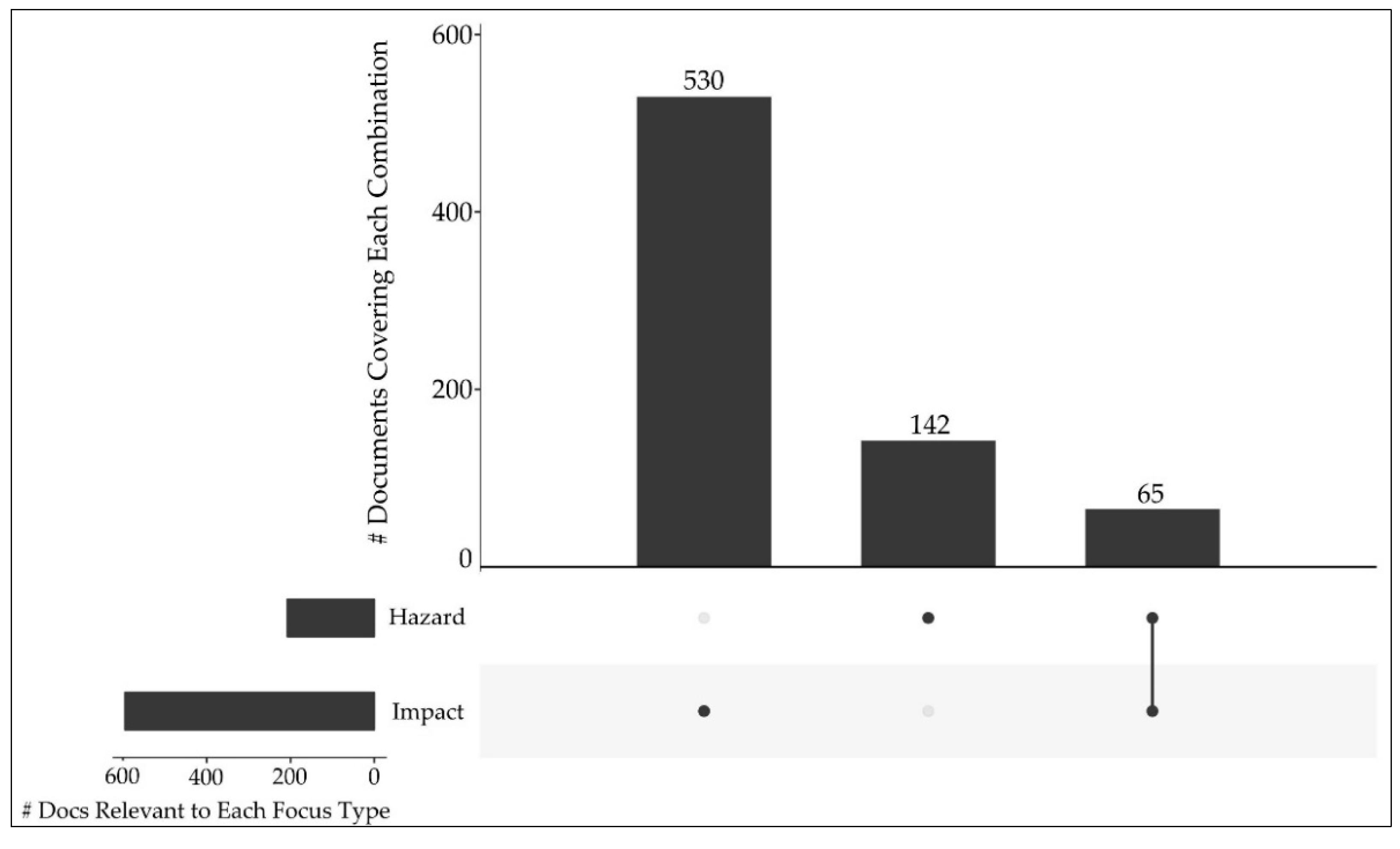
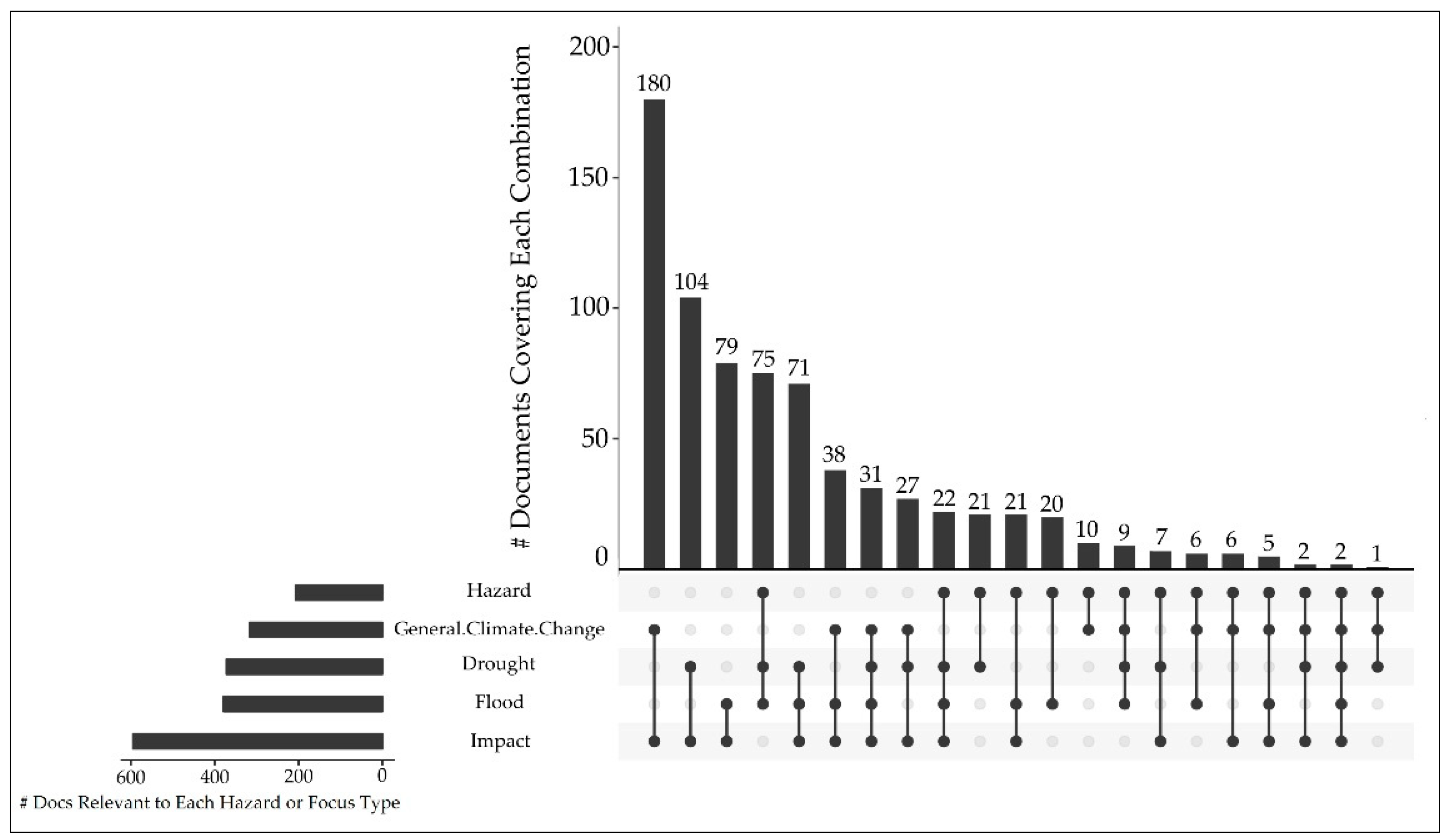
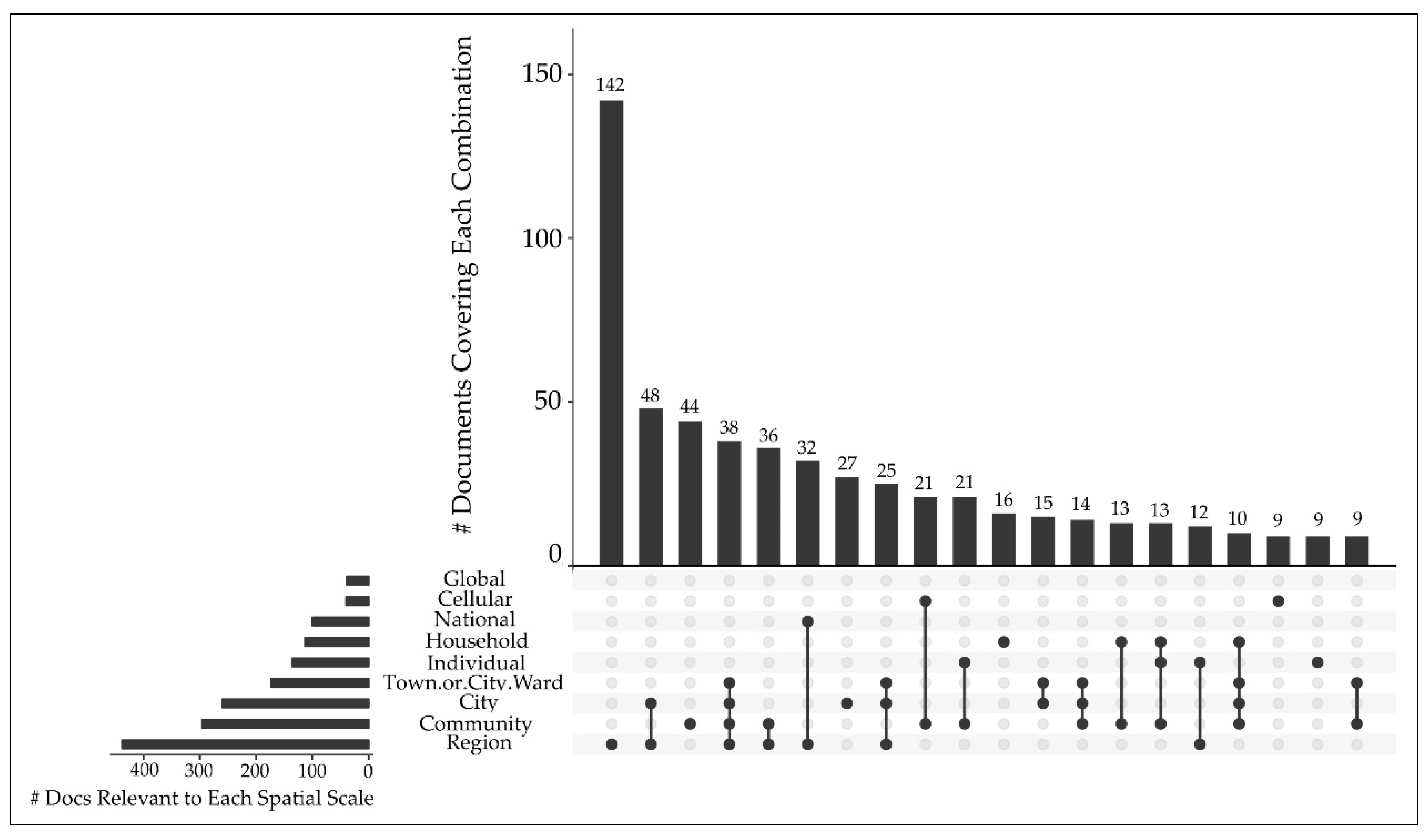
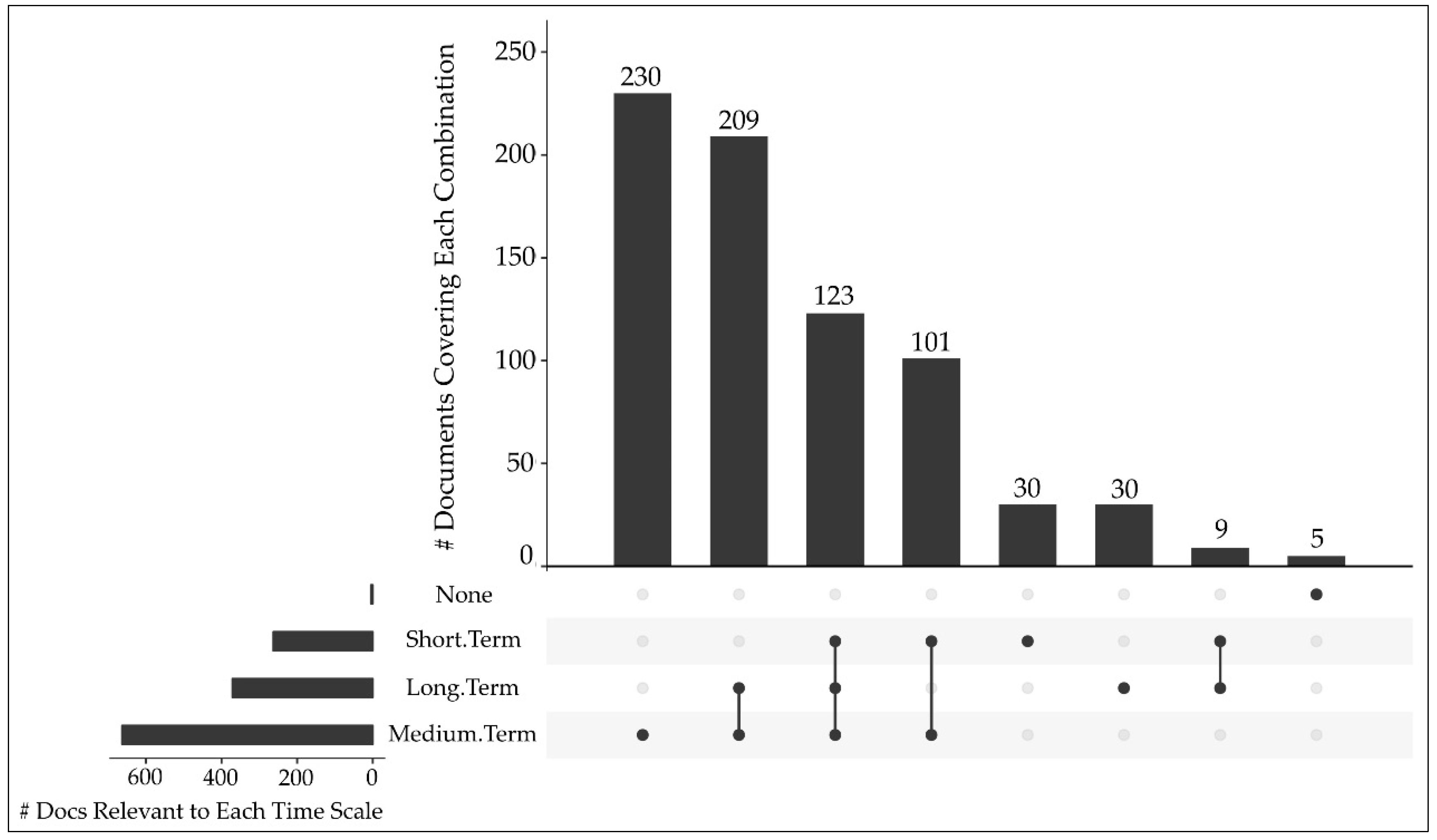
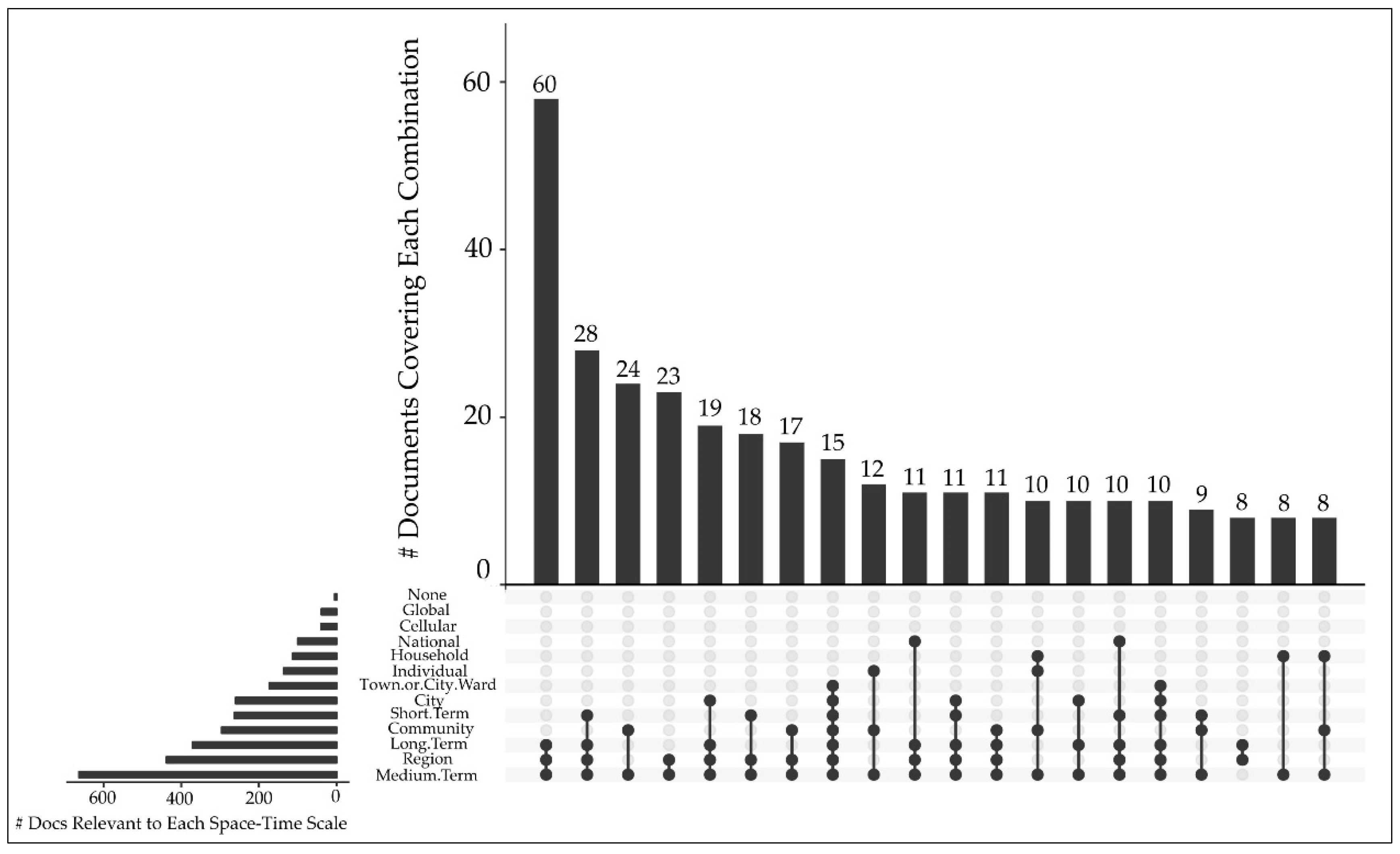
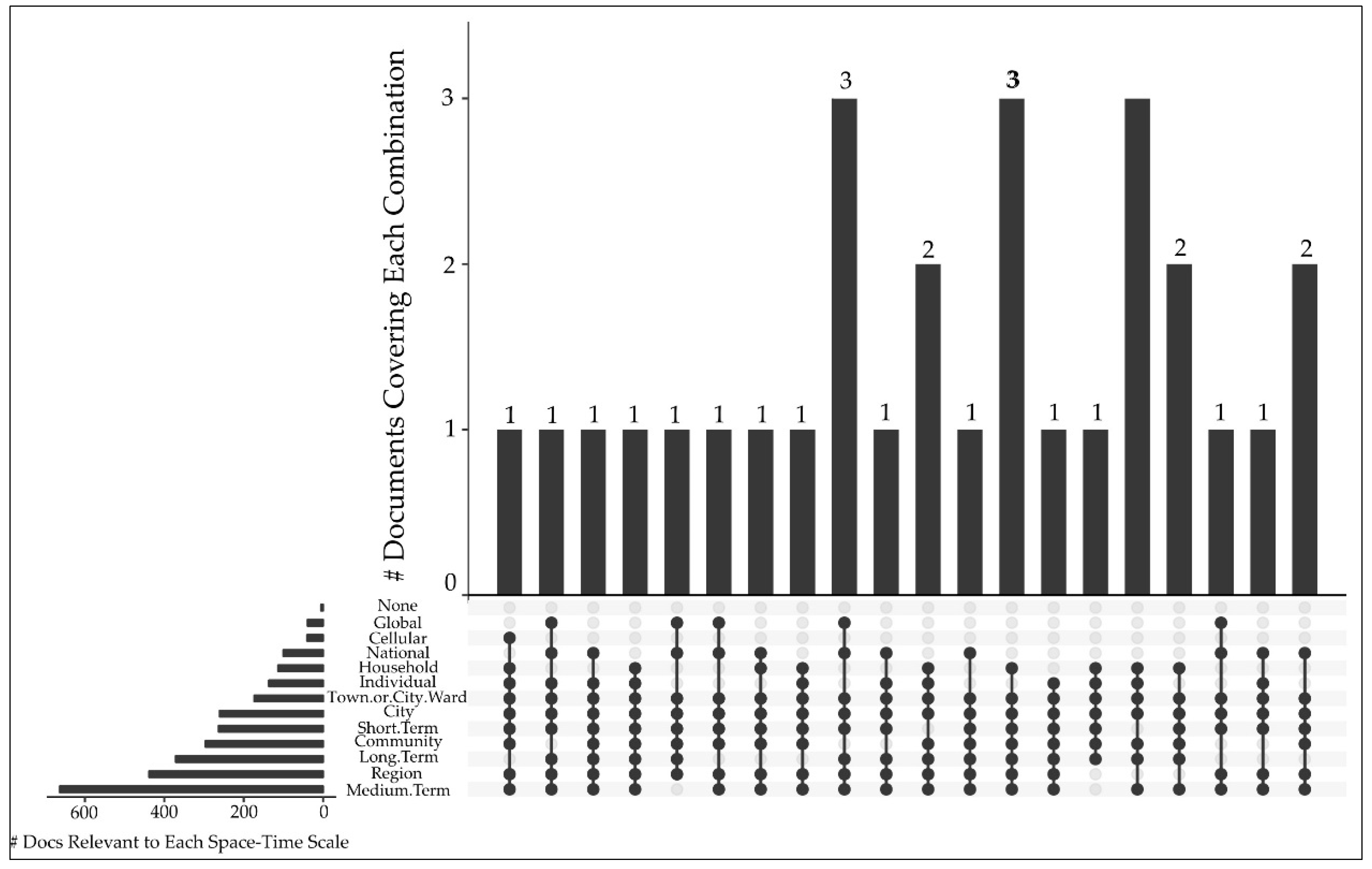
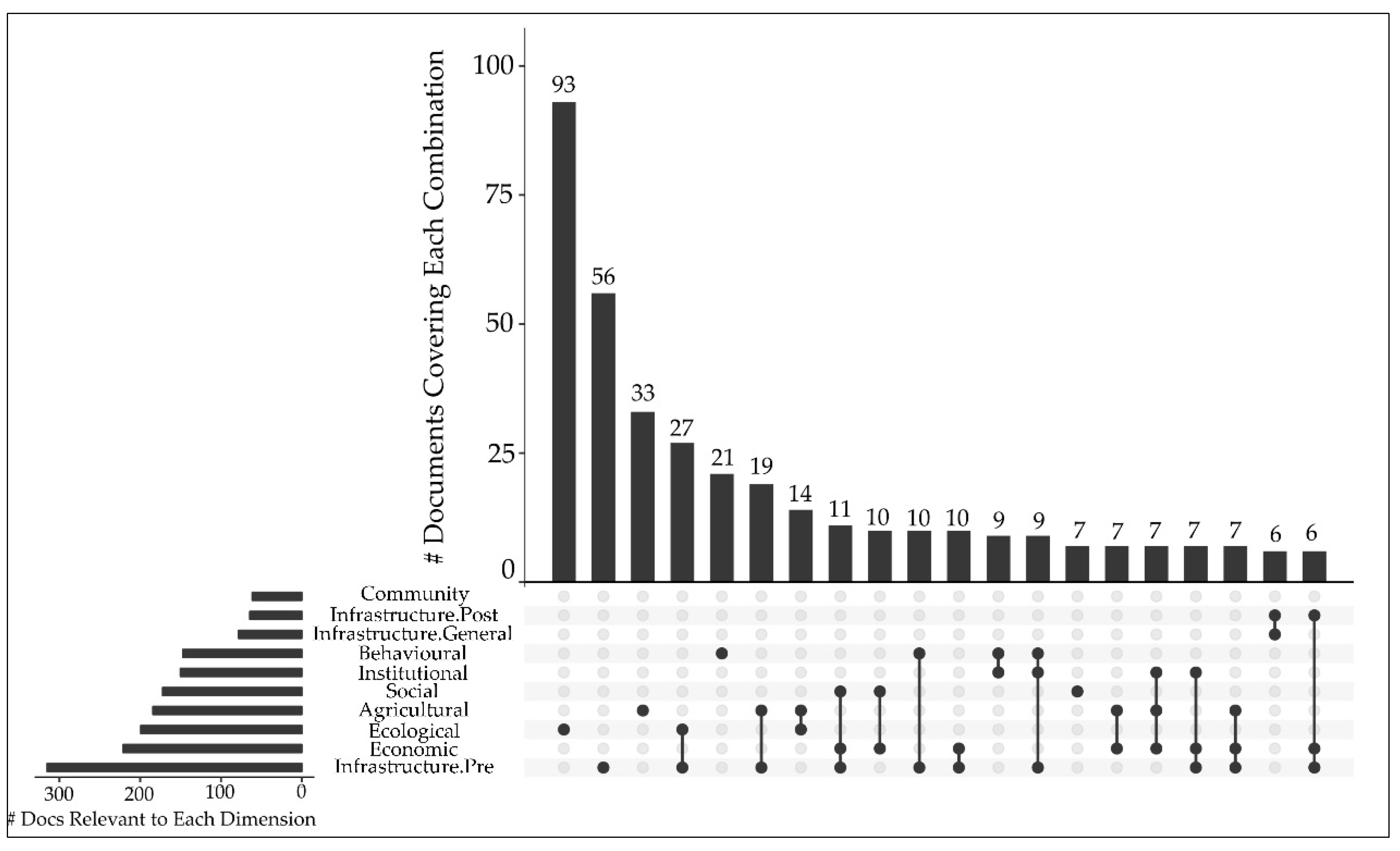
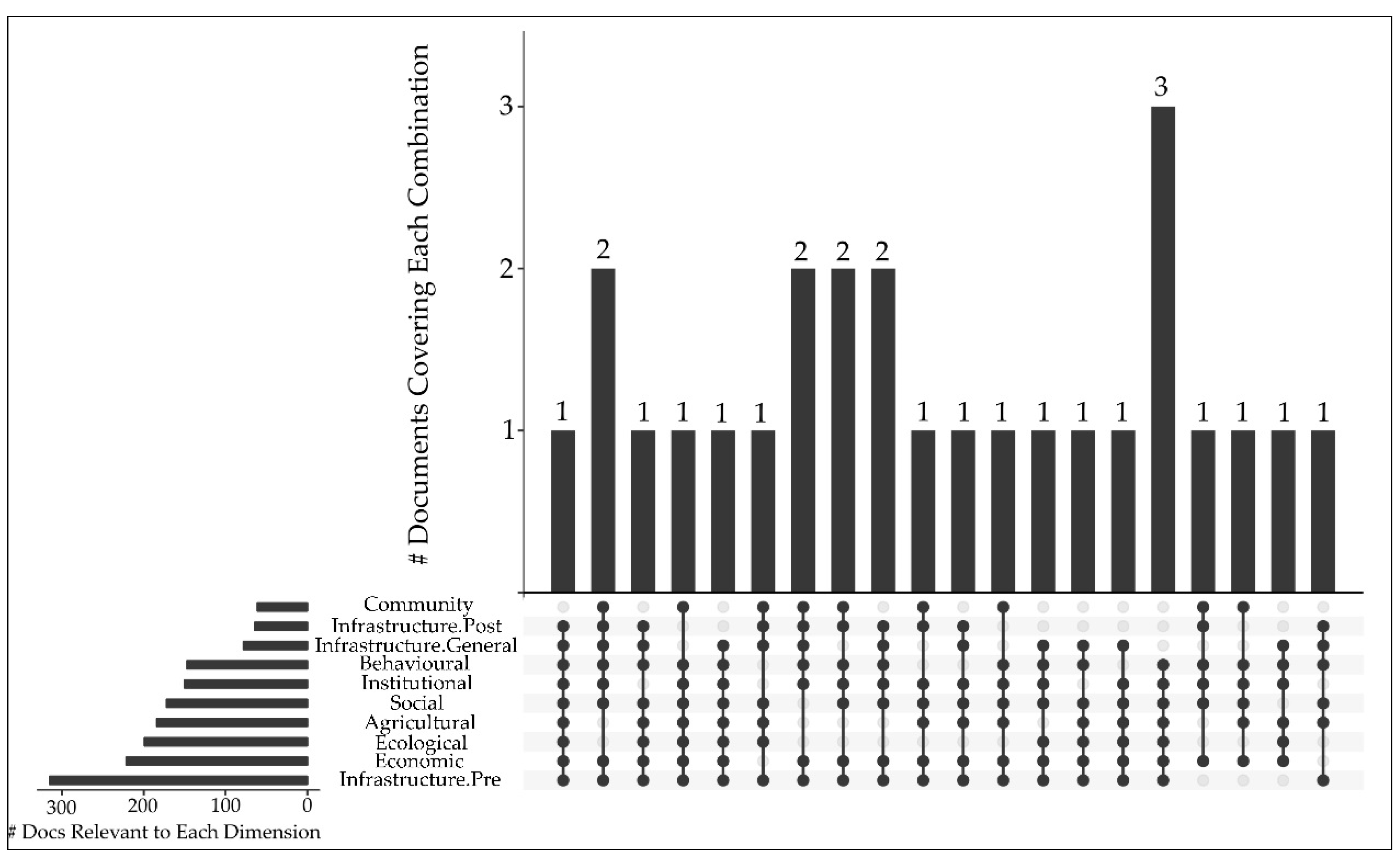
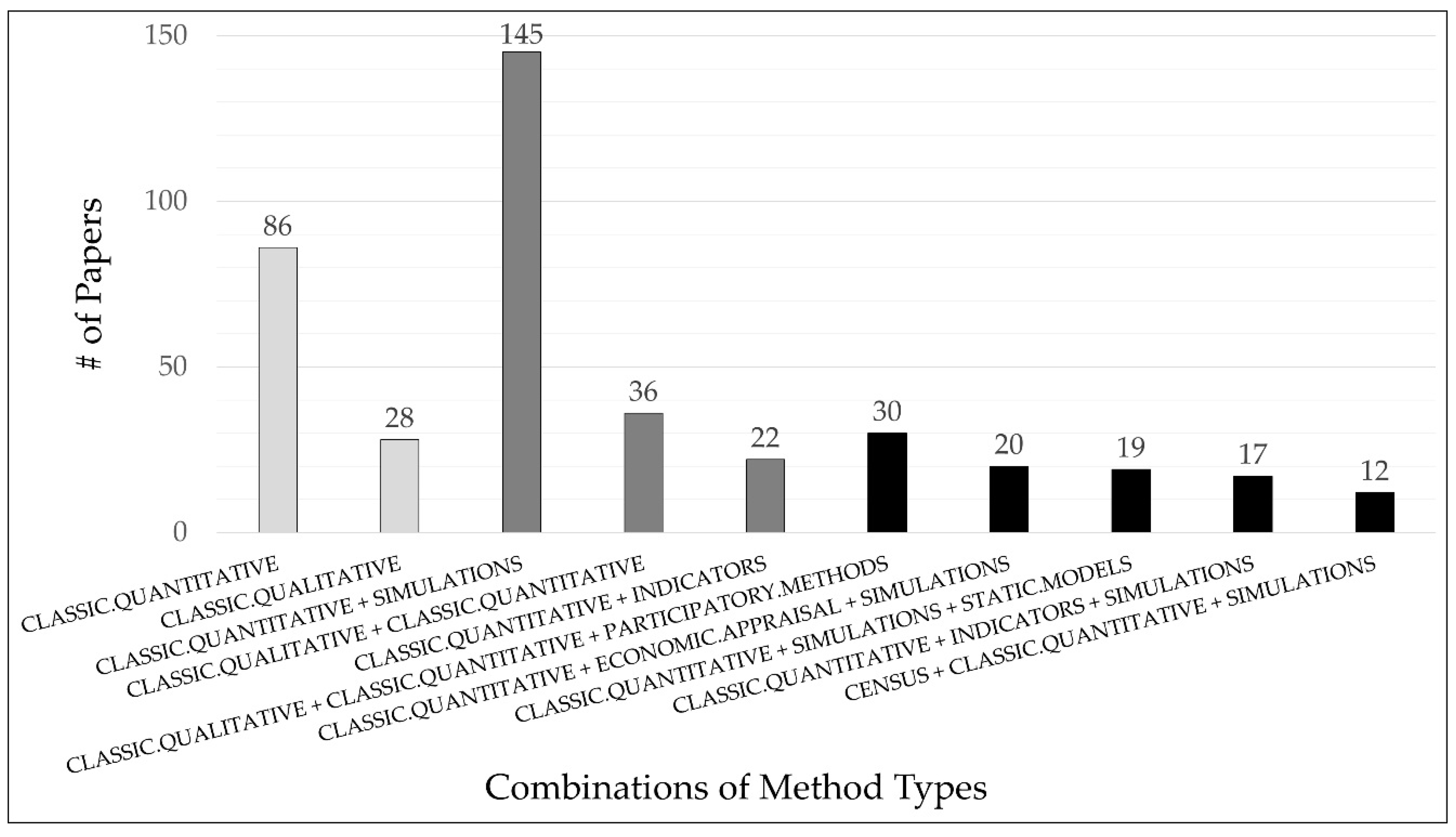
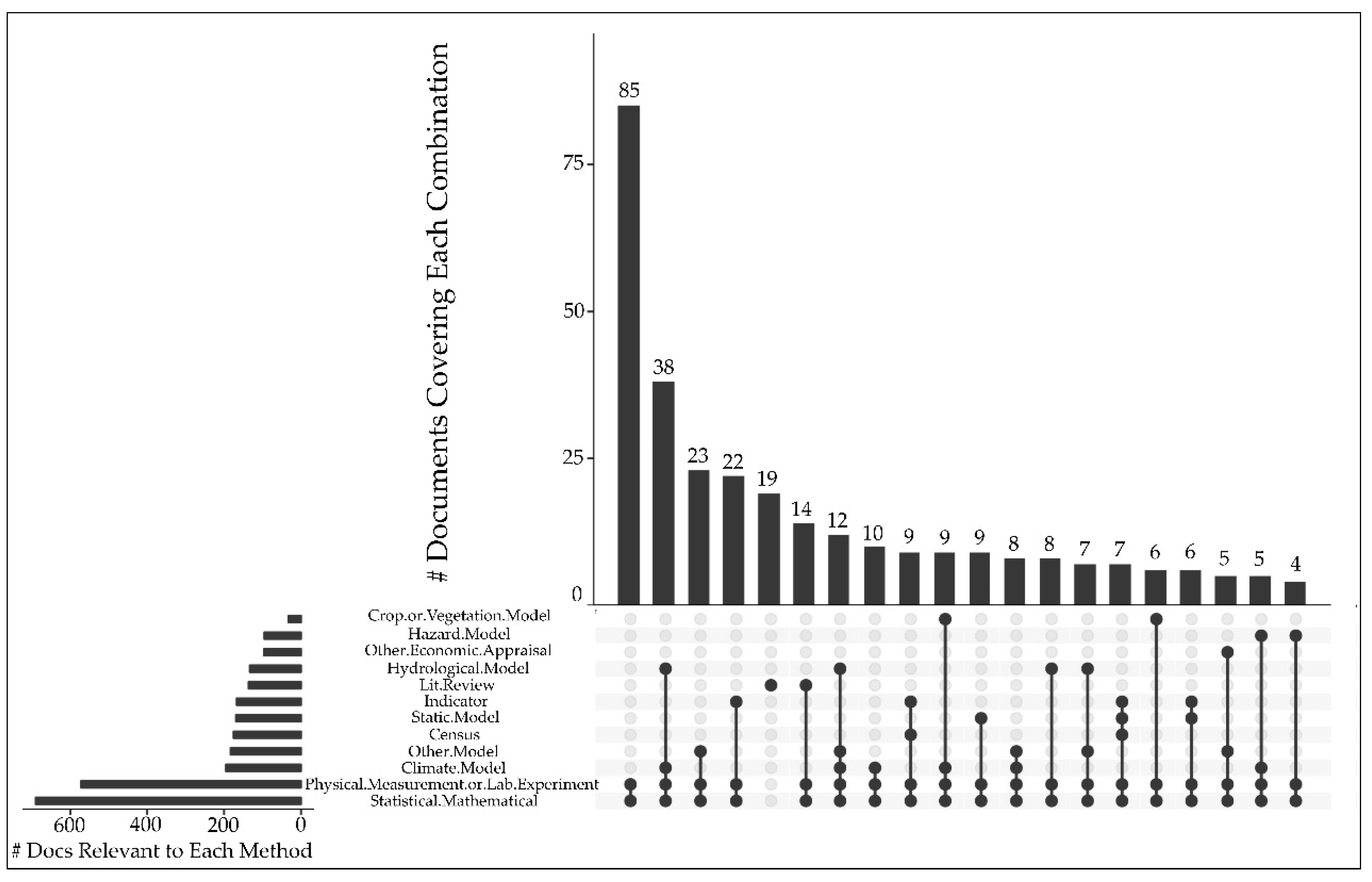
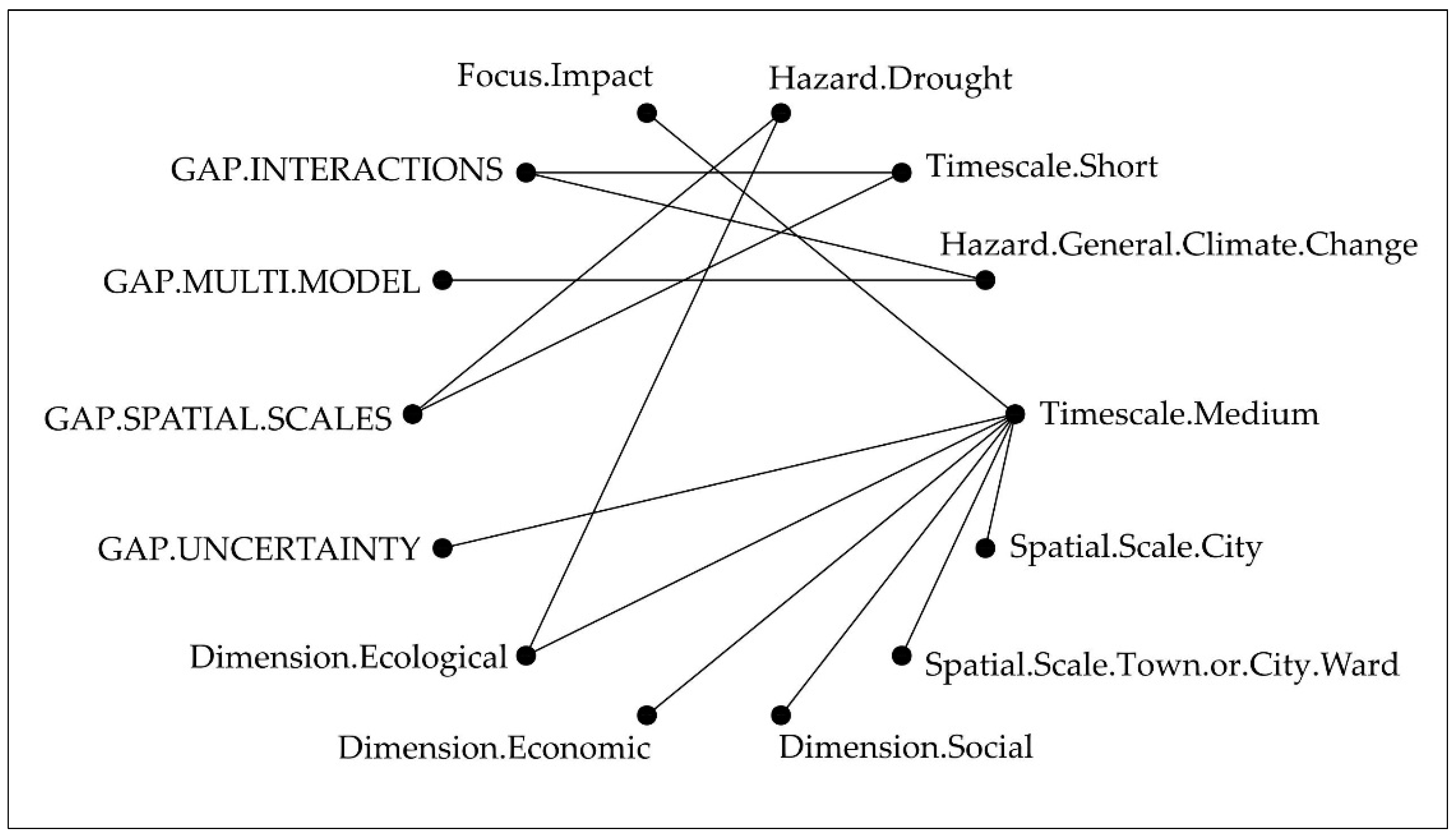
| Category | # | Challenge |
|---|---|---|
| Advancing interdisciplinarity | 1 | Fuller integration and “intensive cooperation” between social and natural sciences [7] |
| 2 | True inter-/transdisciplinary work, by avoiding reductionism [10] | |
| 3 | To be flexible in our construction of shared reflections on a possible future [10] | |
| 4 | To move beyond siloed sectorial analysis, to find new ways of modelling the social and environmental trade-offs of policy choices, institutional arrangements, and economic incentives—and their local and distant outcomes [9] | |
| Integrating ethical concerns | 5 | To ensure solutions do not perpetuate existing inequalities—or create new ones (i.e., we need to consider populations vulnerable populations, and consider the impacts of local/regional interventions globally) [7] |
| 6 | To ensure humans are not “in conflict with themselves through the structures and systems that they themselves have created in order to improve their lifestyles and well-being” [7] | |
| Coping with complexity | 7 | To acknowledge and account for multiple interactions across natural and social systems [10]; To eschew the Western dualism of nature and society, by being more flexible in our approaches, e.g., by applying the same theoretical frameworks across many scales [7] |
| 8 | To acknowledge and account for unclear system boundaries [10] | |
| 9 | To acknowledge and account for different temporal scales [10]; To model and understand both fast ‘shocks’ and slow ‘stressors’ [7] | |
| 10 | To understand how multiple hazards or types of hazards co-occurring at the same time could impact the system [9] | |
| 11 | To identify how directionality could be articulated, democratically anchored, and implemented (i.e., how to effectively model impacts not just hazards, but perhaps more importantly, potential interventions) [7] | |
| 12 | To develop ‘early warning systems’ for cascading effects through the system [9] | |
| 13 | To acknowledge and account for different spatial scales [10]; To connect global scale dynamics to local realities and vice versa [11]; To combine abstract, theoretical, and systemic knowledge with contextual and place-based understandings (i.e., we need to link top–down and bottom–up systems approaches) [10] | |
| 14 | To identify when local-level actions dampen out to have no appreciable effects at larger levels, and when they amplify to drive significant impacts at larger levels (e.g., with new approaches to network, spatial, and multilevel analyses) [9] | |
| 15 | To acknowledge and account for deep influences by human values, behaviour, culture, and institutions [10]; To pay attention to the role of different lifestyles and worldviews in decision-making models, by bringing together current advances in modelling human behaviour and agency and Earth System dynamics, as well as how visions and narratives of urban and rural sustainability consider trade-offs of various choices and their potentially contrasting outcomes [9] | |
| 16 | Because of our limited, human capacity of understanding the fullness of complexity), to “create multiple narratives (scenarios), each invoking different dimensions, none of which will entirely ‘predict’ what will happen. Probabilities, contingencies, conditionalities and thresholds need to be assigned to them as a measure of the extent to which scenarios seem ‘realistic’” [10] | |
| 17 | To find ways to cope with the abundance of data now available to us, by developing sound methodologies which link multiple forms of evidence [9] | |
| 18 | To diversify our modelling approaches, and avoid the “convergence towards single models that are able to answer a wide range of questions, but without sufficient specificity” (i.e., we need to stop expecting one model to tell us everything) [11] |
| # | Concept | Description | Related Challenges from Table 1 |
|---|---|---|---|
| 1 | Uncertainty | Uncertainty in projections of future scenarios; consideration of multiple possible futures | 8; 16 |
| 2 | Spatial Scale | Coverage of multiple spatial scales; connecting contextual, place-based understandings (bottom–up) with theoretical and systemic knowledge (top–down) | 13 |
| 3 | Time Scale | Coverage of multiple temporal scales; any intention to address fast ‘shocks’ or slow ‘stressors’) | 9 |
| 4 | Multimodel Approaches | Usage of multiple models; understanding impossibility of a single ‘silver bullet’ model; linkage of multiple forms of evidence; diversifying modelling approaches; coping with an abundance of data | 13; 17; 18 |
| 5 | Human–nature Dimensions | Acknowledging and accounting for deep influences by human values, behaviour, culture, and institutions; eschewing human–nature dualism | 7; 15 |
| 6 | Interactions | Accounting for multiple interactions across natural and human systems; connecting global scale dynamics to local realities and vice versa; identifying salient leverage points and pathways to transformation; developing ‘early warning systems’ for cascading effects through the system; modelling not just impacts but also feeding back and testing interventions | 7; 11; 12; 13; 14 |
| Type | Hazard/Focus Variable | Description |
|---|---|---|
| Hazard Type | Drought | Referencing droughts, lack of rainfall, low flows |
| Flood | Referencing floods, heavy rainfall, high flows | |
| General Climate Change | Referencing a flood and/or drought in the context of a wider set of climate change hazards, e.g., hurricanes, heat waves, sea level rise | |
| Focus | Hazard | Referencing the detection or quantification of a specific hazard (e.g., a flood extent) |
| Impact | Referencing the identification or quantification or impacts (e.g., economic damages of a flood) |
| # | Complexity Concept | Detailed Variable | Description | Additional Sub-Variables |
|---|---|---|---|---|
| 1 | Uncertainty | Ensemble Scenarios | Use of a method or approach which involves the consideration of multiple possible futures, probabilistic assessments, scenario analysis, climate ensembles, etc. | |
| 2 | Spatial Scale | Cellular | Target of study (plants etc.) on a cellular level; measured in ≤mm | |
| Individual | Discretisation at an individual (one person; tree) level; measured in cm up to 2 m | |||
| Household | Household, family, gauging station; measured in m | |||
| Community | Community; neighbourhood; street; species; small local habitat; small organisation; set of technologies for comparison; set of different stakeholder types for comparison; typically measured in less than 2–10 km2, or higher with low population density | |||
| Town or City Ward | Town; city ward; small area/district; roughly 1000 people per 2.5 km2; roughly 2–3 km2 for urban district, roughly 10–30 km2 for standalone town settlements | |||
| City | City; large municipality; small county; sub-catchment; bay; peninsula; wetland; roughly a large area anywhere between 50–20,000 km2, ~1000 people/2.5 km2 | |||
| Regional | Region; catchment; large county; roughly 5000-800,000 km2 depending on nation size, climate, settlement, and land features | |||
| National | National; some overlap with regional, usually pertaining to national datasets or how a model has been applied than a specific spatial scale; roughly 5000-800,000 km2 | |||
| Global | Global; continental; international (i.e., a nation each representative of different continents, not nations groups in the same region) | |||
| 3 | Time Scale | None | Method is time-independent, i.e., it does not require a time-series or event causality for its use; is not normally intended to provide specific solutions, instead clarifying conceptual underpinnings or ‘mental models’ around adaptation | |
| Short-term | Studied phenomena in intervals of minutes; hours; days; weeks | |||
| Medium-term | Studied phenomena in intervals of months; years | |||
| Long-term | Studied phenomena in intervals of decades; centuries | |||
| 4 | Multimodel Approaches | Census | Census data; Municipal datasets (including social factors; water use) | |
| Classic Qualitative Methods | Qualitative ‘building blocks’ of research | Content Analysis | ||
| Interview | ||||
| Literature Review | ||||
| Observation | ||||
| Personal History Items (e.g., diaries) | ||||
| Questionnaire | ||||
| Survey | ||||
| Classic Quantitative Methods | Quantitative ‘building blocks’ of research | Biological or Physical Measurement (e.g., primary data; meteorological datasets) | ||
| Statistical or Numerical Analysis | ||||
| Decision-Making Analyses | Decision-making analysis; integrated decision support tools; any form of formalised decision-making process or rule-construction surrounding decision-making; usually weighing a broad range of possibilities | Collaborative Risk-Informed Decision Analysis (CRIDA) | ||
| Decision, Event, or Problem Tree | ||||
| Decision Making Under Deep Uncertainty (DMDU) | ||||
| Decision Scaling | ||||
| Decision Support System (DSS); Integrated Assessment Method (IAM) | ||||
| Delphi Method; Expert Ranking or Weighting | ||||
| Dynamic Adaptation Policy Pathways (DAPP); Adaptation Tipping Points (ATP) framework; Adaptation Mainstreaming Moments (AMM) | ||||
| Integrated Value Model for Sustainable Assessment (IVMSA) | ||||
| Multicriteria Decision Analysis (MCDA); Multicriteria Decision-Making (MCDM) | ||||
| Robust Decision-Making (RDM) | ||||
| Strategy Robustness Visualisation Method (SRVM) | ||||
| Economic Appraisal | Appraisals of economic benefits, costs, damages, pricing | Cost–Benefit Analysis (CBA) | ||
| Other Economic Assessment (e.g., calculation of damages; water pricing; willingness-to-pay) | ||||
| Portfolio Analysis | ||||
| Real-In Options (RIO) Analysis | ||||
| Indicators | Indicators derived from more complex datasets to be easily and relatively quickly applied with a sufficiently representative result | |||
| Participatory Methods | Methods which involve the end users affected by research outcomes in their data collection and feedback processes | Focus Group | ||
| Other Participatory Method | ||||
| Photo-Elicitation | ||||
| Seasonal Calendar | ||||
| Serious Games | ||||
| Timeline Exercise | ||||
| Transect Walk | ||||
| Usability Experiment | ||||
| Workshop | ||||
| Simulations | Computer-based simulations which typically run in a time-series | Agent-Based Model | ||
| Climate Model | ||||
| Crop or Vegetation Model | ||||
| Hazard Model | ||||
| Hydrological Model | ||||
| Other Model (e.g., based on decision analysis; water demand) | ||||
| Static Models | Static models which do not independently (via computer) run in a time-series; conceptual models; ‘mental models’; maps for spatially explicit representations | |||
| 5 and 6 | Human–nature Dimensions/Interactions | Agricultural | Involving or impacting agricultural yields and practices, crop choices, crop or livestock improvement | |
| Behavioural/General Adaptation Planning | Generally understanding climate change phenomena, dynamics in human–nature systems, and impacts; mobilising behaviour change; detailing comprehension and decision-making; general adaptation planning effectiveness; power dynamics (e.g., between researchers and practitioners, between outsiders and indigenous groups) | |||
| Community | Referencing community advocacy, civic involvement, innovation potential, cultural aspects, participation in voluntary work, place attachment, collective community values, religious belief, social capital, or social connectivity | |||
| Ecological | Involving or impacting wild/natural species of plants or animals not explicitly for food production, referencing or influencing water quality, water salinity or saltwater intrusion around coastal areas | |||
| Economic | Generally referencing costs (e.g., cost–benefit analysis), benefits, damages, pricing (e.g., willingness to pay), business size, education equity, employment, employment sector diversity, single sector employment, multiple livelihood sources, housing capital, income, income equality | |||
| Infrastructure (General) | Acknowledging a wide range of critical infrastructure (e.g., electricity; nuclear power; telecommunications) | |||
| Infrastructure (Pre-Hazard) | Referencing infrastructure often cited as important pre-hazard (e.g., flood defences), building material, ecological buffer, water-related infrastructure, land use diversity, location, soil retention, wetland diversity, green infrastructure, urban extent | |||
| Infrastructure (Post-Hazard) | Referencing infrastructure often cited as important post-hazard (e.g., transport networks), access/evacuation potential, care for housing and infrastructure, housing age, housing type, medical capacity, shelter capacity, sheltering needs | |||
| Institutional | Acknowledging the role of governance or other institutional contexts, awareness and preparedness (e.g., education), insurance coverage, mitigation and recovery previous disaster experience, political fragmentation, state services and resources, warning systems and weather forecasting, multisectoral partnerships, trade agreements | |||
| Social | Referencing age, communication capacity, disability and special needs, educational status, health insurance coverage or health access, language competency, population size or growth, health impacts, demographic trends |
| Variable 1 | Variable 2 | Cramer’s V |
|---|---|---|
| Time.Scale.Short | Gap.Interactions | 0.0081 |
| Hazard.General.Climate.Change | Gap.Interactions | 0.0076 |
| Time.Scale.Short | Gap.Spatial.Scales | 0.0073 |
| Time.Scale.Medium | Spatial.Scale.Town.or.City.Ward | 0.0067 |
| Hazard.Drought | Gap.Spatial.Scales | 0.0049 |
| Hazard.General.Climate.Change | Gap.Multi.Model | 0.0045 |
| Time.Scale.Medium | Gap.Uncertainty | 0.0035 |
| Hazard.Drought | Dimension.Ecological | 0.0034 |
| Time.Scale.Medium | Focus.Impact | 0.0030 |
| Time.Scale.Medium | Dimension.Social | 0.0029 |
| Time.Scale.Medium | Dimension.Economic | 0.0019 |
| Time.Scale.Medium | Spatial.Scale.City | 0.0010 |
| Time.Scale.Medium | Dimension.Ecological | 0.0002 |
| # | Complexity Concept | State of Play/Existing Patterns) | Next Steps/Future Needs |
|---|---|---|---|
| 1 | Uncertainty | Only 22% of research accounts for uncertainty; Significantly associated to medium-term study (months or years) | Greater consideration of multiple possible futures; Deeper consideration of how uncertainty cascades through different time scales (not just medium-term) |
| 2 | Spatial Scale | Heavy emphasis on regional and community scale analysis; Highest-frequency spatial scales had physical emphasis, i.e., social dynamics and considerations less covered | Need for investigation of finer level of scale, e.g., household-level to determine if critical complexity dynamics are being lost in current approaches; Community (and most other) scale needs greater focus on social, behavioural, cognitive, and/or cultural aspects |
| 3 | Time Scale | Adequate coverage with a heavy emphasis (90% occurrence) on the medium-term; medium-term significantly linked to study of impacts; medium-term is specifically linked to the intention to study ecological, economic, and social dimensions | More focus needed on short-term (hours or days or weeks) and linking this to medium-term (months or years), particularly in study of all types of impacts and interactions |
| 4 | Multimodel Approaches | 30% of approaches use more than 4 types of method; however, most approaches relied on classic quantitative methods and simulations | Better integration of participatory methods (bottom–up) and decision-making Analyses |
| 5 | Human–Nature Dimensions | This was most frequently mentioned complexity concept; Infrastructure (pre-hazard), economic and ecological were most covered | Other dimensions should be explored more frequently and systematically; specifically, the community and infrastructure (post-hazard) dimensions |
| 6 | Interactions | Only 19% of research claims to address interactions of any kind; interactions significantly associated with short-term (hours or days or weeks) | Need to push the study of interactions to link short-term shocks and long-term stressors; development of methods to optimally use minimal data |
| OVERALL | No ‘tried and tested’ methodological patterns have yet emerged in the study of climate change adaptation to hydrohazards; Just 3% of reviewed papers performed any form of method comparison or review before applying their chosen methods; 19% of initial knowledge base did not cover any of the six complexity concepts, even at a broad level; 75% of reviewed papers addressed only 1 or 2 complexity concepts; None of the 910 papers could address all six complexity concepts | More systematic consideration of the six complexity concepts in research design; need to be bolder in venturing to unfamiliar disciplines and adapting complexity-smart methods | |
© 2019 by the authors. Licensee MDPI, Basel, Switzerland. This article is an open access article distributed under the terms and conditions of the Creative Commons Attribution (CC BY) license (http://creativecommons.org/licenses/by/4.0/).
Share and Cite
Bedinger, M.; Beevers, L.; Collet, L.; Visser, A. Are We Doing ‘Systems’ Research? An Assessment of Methods for Climate Change Adaptation to Hydrohazards in a Complex World. Sustainability 2019, 11, 1163. https://doi.org/10.3390/su11041163
Bedinger M, Beevers L, Collet L, Visser A. Are We Doing ‘Systems’ Research? An Assessment of Methods for Climate Change Adaptation to Hydrohazards in a Complex World. Sustainability. 2019; 11(4):1163. https://doi.org/10.3390/su11041163
Chicago/Turabian StyleBedinger, Melissa, Lindsay Beevers, Lila Collet, and Annie Visser. 2019. "Are We Doing ‘Systems’ Research? An Assessment of Methods for Climate Change Adaptation to Hydrohazards in a Complex World" Sustainability 11, no. 4: 1163. https://doi.org/10.3390/su11041163
APA StyleBedinger, M., Beevers, L., Collet, L., & Visser, A. (2019). Are We Doing ‘Systems’ Research? An Assessment of Methods for Climate Change Adaptation to Hydrohazards in a Complex World. Sustainability, 11(4), 1163. https://doi.org/10.3390/su11041163






